Mary Anne Yarde's Blog: The Coffee Pot Book Club , page 186
February 4, 2018
Lady Johanna St.John and The Tower of London by Elizabeth St.John #History @ElizStJohn
Lady Johanna St.John andthe Tower of LondonThe Lydiard Chronicles: A Family Saga
The Lydiard Chronicles, my historical fiction series, is named after Lydiard Park, the St.John ancestral home in Wiltshire. Full of portraits and memorials of my family, Lydiard House and adjacent Church of St. Mary's is a writer’s dream. Elizabethan monuments, Jacobean portraits and medieval wall paintings all provide a rich tapestry of images, calling across the ages for their stories to be told.
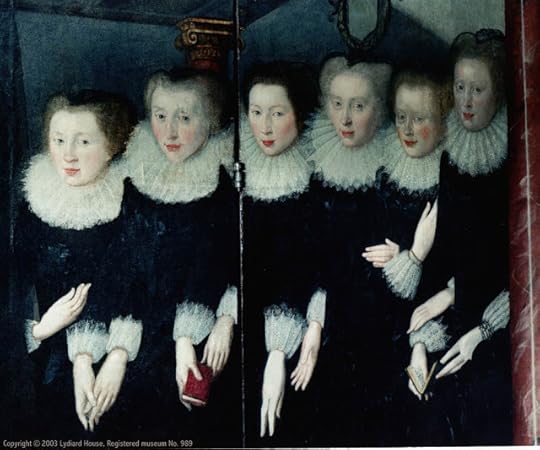 The Six St.John Sisters (Lucy St.John far left)
The Six St.John Sisters (Lucy St.John far left)
The first in the series, The Lady of the Tower, takes place in the early 1600s. The Tower of London is infamous for the famous prisoners it housed, the horrific torture that took place within its walls, and the tragic executions witnessed on Tower Green. But along with the kept must be the keepers, and the story of my ancestress, Lucy St.John, is that of The Lady of the Tower – the wife of the Lieutenant of the Tower.Lucy first moved to the Tower in 1617, with a two year old baby boy and no warning that her life was about to change so drastically. She married Sir Allen Apsley after a heartbreaking betrayal by the Earl of Suffolk, one of King James’ courtiers. Lucy hoped for a quiet life, marrying an older man and bringing up his two children. All that changed when her sister Barbara married Edward Villiers, brother to the Duke of Buckingham. The Duke, George Villiers, was the favorite of King James and his son, Prince Charles, and with that came the power to bestow all kinds of riches on his friends and relatives. As a result, Lucy’s husband was granted the position of Lieutenant of the Tower.
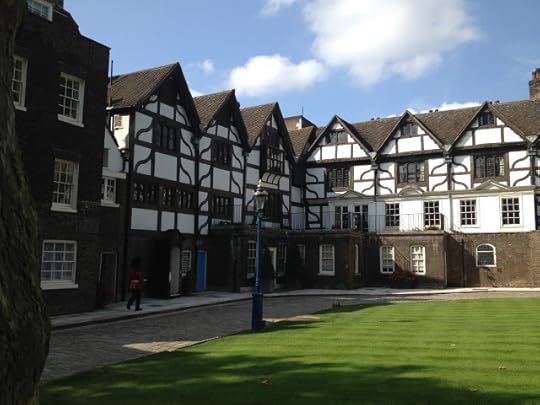 Lucy St.John’s house within The Tower of London
Lucy St.John’s house within The Tower of London
Once within the Tower, Lucy became a witness to history. She took care of Sir Walter Raleigh in his later years, encouraging his alchemy experiments by lending him her henhouse as a workshop. And, in an ironic twist of fate, Lucy became the guard of Frances Howard, Suffolk’s sister, when she was imprisoned in the Tower after instigating the murder of Thomas Overbury.
Along with the duties of organizing food for the prisoners, Lucy was also responsible for their physical wellbeing, as best she could. According to her daughter, “to all prisoners that come into the Tower she was as a mother. All the time she dwelt in the Tower, if any were sick she made them broths and restoratives with her own hands, visited and took care of them, and provide them all necessaries; if any were afflicted she comforted them, so that they felt not the inconvenience of a prison who were in that place.”
I was also able to include many medicinal recipes within the novel that come from Lady Johanna St.John's Recipe Book, part of the Wellcome Foundation collection in London. Lady Johanna was Lucy's niece, and since so many recipes were handed down and exchanged within the family, I felt it no stretch of the imagination to think some may have been Lucy's.
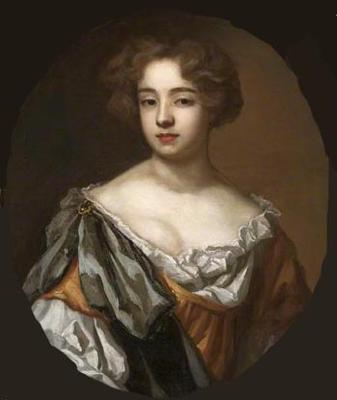 Lady Johanna St.John
Lady Johanna St.John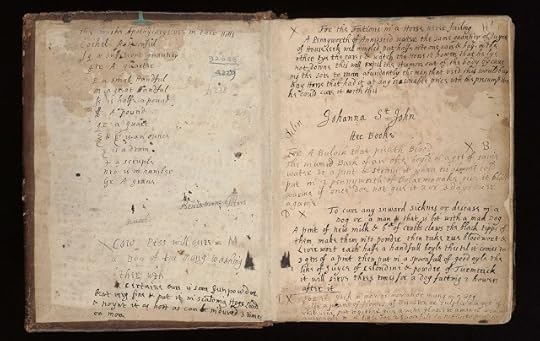 Lady Johanna’s Recipe bookThe Lady of the Tower is based on a diary from the 1660s that I discovered many years ago in Nottingham Castle. Written by the heroine’s daughter, her vivid story of her mother brought my ancestors to life, and I was determined to honor the truth of her account of my seventeenth century family. As I researched more, I made the decision to only use contemporary sources to inform my fiction, and so as I read letters, court pleadings, dispatches, their voices started to come alive. And, as I immersed myself more in their world, they became part of my life. Because they were real people, and connected to me, I felt I had an obligation to interpret their lives authentically, while at the same time describing human behaviors that transcend time and place.
Lady Johanna’s Recipe bookThe Lady of the Tower is based on a diary from the 1660s that I discovered many years ago in Nottingham Castle. Written by the heroine’s daughter, her vivid story of her mother brought my ancestors to life, and I was determined to honor the truth of her account of my seventeenth century family. As I researched more, I made the decision to only use contemporary sources to inform my fiction, and so as I read letters, court pleadings, dispatches, their voices started to come alive. And, as I immersed myself more in their world, they became part of my life. Because they were real people, and connected to me, I felt I had an obligation to interpret their lives authentically, while at the same time describing human behaviors that transcend time and place. Once I had completed The Lady of the Tower, I realized that the story of Lucy and her family could not end. I set about writing the story of her children, Allen and Luce. The second book of The Lydiard Chronicles is named “By Love Divided” and takes place is the years leading up to the English Civil War. Lucy St.John embraced the Puritan cause and yet her son chose to fight for King Charles. As England fell into bloody civil war, her daughter embraced Parliament’s radical views and confronted the very core of the family’s beliefs. Again based on contemporary diaries and documents, By Love Divided tells of the heart-wrenching choices my family faced.
Writing about my own ancestors has been a remarkable journey. Reading their words, their hopes, dreams for the future and loves and sorrows is an incredibly emotional process. And, knowing what lies ahead as they share their thoughts can be very harrowing. In all, though, knowing that these people lived and loved much the same way as we do today gives me great joy as I tell their stories. It is an honor to bring them alive for today’s readers and show us that we all have the same dreams and desires, even with centuries between us.
 Lydiard House and Park
Lydiard House and ParkThe Lydiard Chronicles are on sale on Amazon.com as Kindle, Kindle Unlimited and paperbacks. The Lady of the Tower is also on sale at the Tower of London and both paperbacks are available through bookshops. Visit my Amazon page for more details:
Elizabeth St.John
 Elizabeth St.John at Lydiard House
Elizabeth St.John at Lydiard House Elizabeth St.John was brought up in England and lives in California. To inform her writing, she has tracked down family papers and residences from Nottingham Castle, Lydiard Park, and Castle Fonmon to the Tower of London. Although the family sold a few castles and country homes along the way (it's hard to keep a good castle going these days), Elizabeth's family still occupy them - in the form of portraits, memoirs, and gardens that carry their imprint. And the occasional ghost. But that's a different story...
Elizabeth loves to hear from readers, you can find her... Website Facebook Twitter
The Lady of the Tower:A Novel (The Lydiard Chronicles Book 1)
 Orphaned Lucy St.John, described as "the most beautiful of all," defies English society by carving her own path through the decadent Stuart court. In 1609, the early days of the rule of James I are a time of glittering pageantry and cutthroat ambition, when the most dangerous thing one can do is fall in love . . . or make an enemy of Frances Howard, the reigning court beauty.
Orphaned Lucy St.John, described as "the most beautiful of all," defies English society by carving her own path through the decadent Stuart court. In 1609, the early days of the rule of James I are a time of glittering pageantry and cutthroat ambition, when the most dangerous thing one can do is fall in love . . . or make an enemy of Frances Howard, the reigning court beauty.Lucy catches the eye of the Earl of Suffolk, but her envious sister Barbara is determined to ruin her happiness. Exiling herself from the court, Lucy has to find her own path through life, becoming mistress of the Tower of London. Riding the coattails of the king’s favorite, the Duke of Buckingham, the fortunes of the St.Johns rise to dizzying heights. But with great wealth comes betrayal, leaving Lucy to fight for her survival—and her honor—in a world of deceit and debauchery.
Elizabeth St.John tells this dramatic story of love, betrayal, family bonds and loyalty through the eyes of her ancestor Lucy and her family’s surviving diaries, letters and court papers.
Amazon
By Love Divided: The Lydiard Chronicles 1630-1646
 Fiercely independent, Luce Apsley rejects the dazzling English court and an entitled marriage arranged by her aristocratic family, and falls in love with a Roundhead soldier. Her mother follows the Puritan cause and yet her beloved brother, Sir Allen Apsley, chooses to fight for king and country. As England falls into bloody civil war, Luce embraces Parliament's radical views and confronts the very core of the family's beliefs. And when their influential Villiers cousins raise the stakes, King Charles demands loyalty. Allen and Luce face a devastating challenge. Will war unite or divide them? In the dawn of rebellion, love is the final battleground.
Fiercely independent, Luce Apsley rejects the dazzling English court and an entitled marriage arranged by her aristocratic family, and falls in love with a Roundhead soldier. Her mother follows the Puritan cause and yet her beloved brother, Sir Allen Apsley, chooses to fight for king and country. As England falls into bloody civil war, Luce embraces Parliament's radical views and confronts the very core of the family's beliefs. And when their influential Villiers cousins raise the stakes, King Charles demands loyalty. Allen and Luce face a devastating challenge. Will war unite or divide them? In the dawn of rebellion, love is the final battleground. Based on surviving memoirs, court papers and letters of Elizabeth St.John's family, By Love Divided continues the story of Lucy St.John, The Lady of the Tower. This powerfully emotional novel tells of England's great divide, and the heart-wrenching choices one family faces.
Amazon
Published on February 04, 2018 23:00
February 1, 2018
Author’s Inspiration ~ Yvonne Harlech #HistoricalFiction #Egypt @YvonneHarlech
Please give a warm welcome to historical fiction author, Yvonne Harlech.
Author’s Inspiration

I was inspired to write Mistress of the Temple when I first travelled to Egypt back in 2002. While reading Abydos: Holy City of Ancient Egypt, followed by The Search for Omm Sety, I began to appreciate the incredible life of Dorothy Eady (aka Omm Sety) and I immediately saw the fictional potential in her story. There was so much more to say about Bentreshy and I felt a novel could fill in the blanks, give a voice to a heroine who’d been rendered silent.
A few years later I set off on a powerful journey, retracing Omm Sety’s footsteps back to Abydos, where she believed she’d once lived as Priestess Bentreshy, over three thousand years ago...
Wandering around the exquisite Temple of King Sety the 1st I imagined how Bentreshy had once lived and worshipped as a priestess, and how she’d fallen in love with King Sety – right there in the temple garden where I stood in rapture – now a mass of sand and ruins, but springing to life in my imagination.
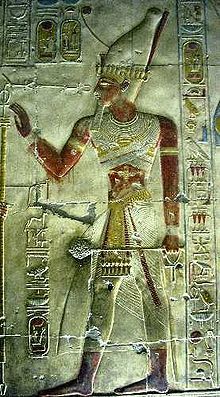 Image of Seti I from his temple in Abydos.
Image of Seti I from his temple in Abydos.Through Bentreshy’s eyes I perceived that the Osirian Festival was a great time of celebration, bringing the temple priesthood and local people together, with everyone dancing, singing and enjoying a communal feast in the name of Osiris. Through this divine connection, they too would travel to the Afterlife and live as Eternal Beings. By writing about Bentreshy, I felt I was bringing her back to life, allowing her to speak after thousands of years of silence. That was very inspiring to me and kept me motivated to finish the two books.
Yvonne Harlech
 Born in Scotland, Yvonne Harlech developed a love of myths and legends and all things magical. As a child her mother was offered a teaching position in Canada, and so mother and daughter left for Montreal to begin their new adventure. Grappling with a different country, Harlech’s growing consciousness was echoed in the wild landscape, the immigrant’s sense of exile and search for an individual voice. She went on to study English Literature at Concordia University and later returned to the UK in search of her roots. Harlech now lives in Cheshire with her husband where she writes about Egyptian, Celtic and Roman history. Harlech has written two historical novels, Mistress of the Temple and Harp of Joy, set in ancient Egypt. The books explore ancient Egypt’s mystical dimension, its dramatic myths and history. The author is currently writing a novel about Romano-Britain, when a new kingdom emerges out of invasion and the collision of myths and cultures.
Born in Scotland, Yvonne Harlech developed a love of myths and legends and all things magical. As a child her mother was offered a teaching position in Canada, and so mother and daughter left for Montreal to begin their new adventure. Grappling with a different country, Harlech’s growing consciousness was echoed in the wild landscape, the immigrant’s sense of exile and search for an individual voice. She went on to study English Literature at Concordia University and later returned to the UK in search of her roots. Harlech now lives in Cheshire with her husband where she writes about Egyptian, Celtic and Roman history. Harlech has written two historical novels, Mistress of the Temple and Harp of Joy, set in ancient Egypt. The books explore ancient Egypt’s mystical dimension, its dramatic myths and history. The author is currently writing a novel about Romano-Britain, when a new kingdom emerges out of invasion and the collision of myths and cultures.Yvonne loves to hear from readers, you can find her: Website Twitter
Mistress of the Temple
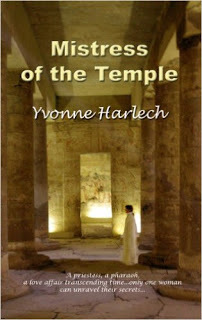 In the temple of Abydos in 1290 BC, a young priestess is ready to serve Isis, goddess of wisdom and healing. But when she meets King Sety I in the temple garden, her destiny suddenly changes, and she can no longer fulfil her promise to the temple. The pair must battle against the mighty priesthood and challenge the many prejudices of the court.
In the temple of Abydos in 1290 BC, a young priestess is ready to serve Isis, goddess of wisdom and healing. But when she meets King Sety I in the temple garden, her destiny suddenly changes, and she can no longer fulfil her promise to the temple. The pair must battle against the mighty priesthood and challenge the many prejudices of the court.In 1904 the young Dorothy Eady is haunted by memories of ancient Egypt, where she once worshipped the gods and lived in a glorious temple - until her world came to an abrupt end. Driven by the desire to unravel her mysterious dreams Dorothy travels to Egypt and embarks on a dramatic journey, back to the reign of King Sety I, where her life once began.
Amazon US Amazon UK
Published on February 01, 2018 23:00
January 31, 2018
Life in the time of… Joan of Ark by Odelia Floris #History #France @OdeliaFloris
Life in the time of… Joan of Ark
by Odelia Floris
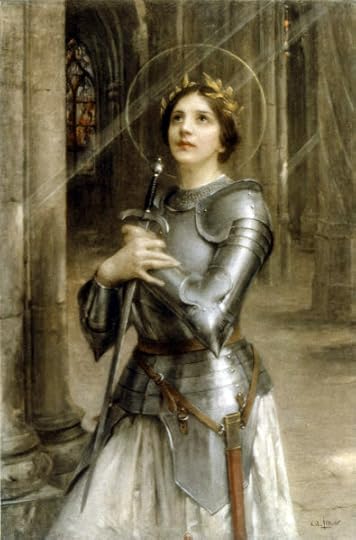
My Medieval romance/mystery, The Heart of Darkness, takes place in England in the years 1430 and 1431. At that time, something was happening across the Channel in France that went against everything that was normal in medieval European society. Something of which, if it had never happened and we had read of in a novel, we would say “This is fantastical and ridiculous. Something like that would have never happened in real life.” This something was Joan of Arc. Her story is almost unique in history. A girl of humble origins, she broke almost every convention that applied to women of her time. Many modern historical novels, films andtelevision dramas depict young women taking on roles and behaviours usually reserved for men. Does this make them inaccurate, or is it true that Joan’s example shows that medieval women could indeed act as men did? To find the answer to this, Joan’s story requires a closer look. In 1428, the English sent across the Channel a new army intended to mop up the final resistance remaining in France and finally conquer the kingdom they had so long been fighting to gain. The France king, Charles VII, had been deserted by many of his barons. With little money, few soldiers and hardly any support, Charles faced the gathering storm alone. Meanwhile, in the tranquil beauty of the valley of the River Meuse, in Lorraine, lived a peasant girl of teen years – like other humble folk, she did not know her exact age. To the outward eye, there was nothing noteworthy about her or her history. She lived with her mother and father in the small village of Domrémy, near the primeval Wood of Oaks, helping her mother with household chores and driving the family’s sheep out to pasture. All that could be said of her was that she was more devout than the other children of Domrémy.But it soon became clear Joan was not at all like the other peasant girls of Domrémy. They did not go to the captain of the local fortress and tell him: “God has willed it that the Dauphin shall be king of France. It is I myself who shall lead him to be crowned.” The captain, Robert de Baudricourt, a knight of Charles VII, reacted with anger and derision. Joan was sent home. That Joan had been able to come at all had been through the help of her cousin, Durand Lassois. To convince him, Joan had told him of the voices that urged her to France’s aid, and of how the Archangel Michael had appeared to her. Michael commanded her to go to Baudricourt, who would give her soldiers to take to the Dauphin. The archangel told Joan it was her destiny to break the siege of Orléans, drive the English out of France and lead Charles to be crowned at Reims. When Lassois still hesitated, she reminded him of the prophecy: “France will be saved by a maiden who comes from an oak forest”. Joan returned home and waited. At the end of the year, she appeared before Robert de Baudricourt once again. This time, she spoke of a disastrous battle which had ended in a loss to the English. No such defeat had been heard of, so Joan was scoffed at once again. But news soon reached Baudricourt of a humiliating French defeat, where an English force outnumbered twelve to one had routed them soundly. That Joan had spoken of the battle before she could have heard of it seemed to confirm her prophetic gift. And thus began the short but dazzling career of Joan of Arc the warrior-maid. Dressed in the attire of a man, she went on to lead the French armies to victory and did indeed bring Charles to be crowned King of France at Reims. So, how did she succeed in taking on a man’s role so completely in an age when no other woman had? Medieval Europe was an age of faith. This was the key to Joan’s power. Traditional ways and laws formed rigid channels in which the lives of most medieval women flowed. But Joan of Arc was able to rise above these through the special relationship she appeared to have with her God. Her devoutness and visions made her revered, and as God-chosen saviour and seer, she entered a realm where gender ceased to matter.
Odelia Floris Odelia Floris grew up in rural New Zealand. From a young age she created imaginary characters and magical worlds. But rather than growing up and putting aside these flights of fancy as most do, she turned to art, painting and drawing as a teenager before taking to creative writing around the age of twenty-one. Her first novel, The Heart of Darkness, features a knight in rusty armour and a damsel determined to uncover his dark secrets. Beguile Me Not, a historical romance set in colonial New Zealand, and The Little Demon Who Couldn’t, a historical urban fantasy for children, followed. Her most recent book is The Cockcrow Curse, a sequel to The Heart of Darkness. She always has at least two creative projects in progress, and is never short of inspiration. Odelia Floris has a Bachelor of Arts degree majoring in Humanities, and diplomas in ecology, communication and freelance journalism. She lives rurally on the east coast of New Zealand’s beautiful North Island. Her other passions include singing, playing piano, art, reading and nature.
Odelia Floris grew up in rural New Zealand. From a young age she created imaginary characters and magical worlds. But rather than growing up and putting aside these flights of fancy as most do, she turned to art, painting and drawing as a teenager before taking to creative writing around the age of twenty-one. Her first novel, The Heart of Darkness, features a knight in rusty armour and a damsel determined to uncover his dark secrets. Beguile Me Not, a historical romance set in colonial New Zealand, and The Little Demon Who Couldn’t, a historical urban fantasy for children, followed. Her most recent book is The Cockcrow Curse, a sequel to The Heart of Darkness. She always has at least two creative projects in progress, and is never short of inspiration. Odelia Floris has a Bachelor of Arts degree majoring in Humanities, and diplomas in ecology, communication and freelance journalism. She lives rurally on the east coast of New Zealand’s beautiful North Island. Her other passions include singing, playing piano, art, reading and nature.
The Cockcrow Curse(The Chaucy Shire Medieval Mysteries, Book 2)
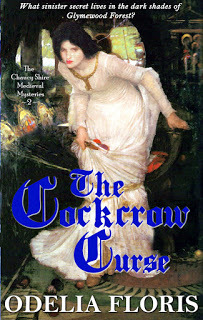 The Cockcrow Curse continues the ‘captivating and unusual’ Chaucy Shire Medieval Mysteries series where Book 1, The Heart of Darkness, left off. Escape to late medieval England and spend a summer in the beautiful yet dangerous little shire of Chaucy. Rowena’s change of circumstances was entirely unexpected. But as verdant summer comes to the fields and forests of Chaucy Shire, her blossoming world of love and peace is pierced by a sudden and mysterious trouble. The unknown forest-dwellers who saved her life in the winter snows have called for the help she promised was theirs in repayment if ever they had need of it. With Sir Richard still suffering the effects of a knee wound, she and he reluctantly ride to the rendezvous in Glymewood forest. Thus begins a trickle that soon turns to a torrent of trouble...Amazon US Amazon UK Amazon AU <!-- /* Font Definitions */ @font-face {font-family:"Cambria Math"; panose-1:2 4 5 3 5 4 6 3 2 4; mso-font-charset:0; mso-generic-font-family:auto; mso-font-pitch:variable; mso-font-signature:-536870145 1107305727 0 0 415 0;} @font-face {font-family:Calibri; panose-1:2 15 5 2 2 2 4 3 2 4; mso-font-charset:0; mso-generic-font-family:auto; mso-font-pitch:variable; mso-font-signature:-520092929 1073786111 9 0 415 0;} /* Style Definitions */ p.MsoNormal, li.MsoNormal, div.MsoNormal {mso-style-unhide:no; mso-style-qformat:yes; mso-style-parent:""; margin-top:0cm; margin-right:0cm; margin-bottom:10.0pt; margin-left:0cm; line-height:115%; mso-pagination:widow-orphan; font-size:11.0pt; font-family:Calibri; mso-ascii-font-family:Calibri; mso-ascii-theme-font:minor-latin; mso-fareast-font-family:Calibri; mso-fareast-theme-font:minor-latin; mso-hansi-font-family:Calibri; mso-hansi-theme-font:minor-latin; mso-bidi-font-family:"Times New Roman"; mso-bidi-theme-font:minor-bidi;} a:link, span.MsoHyperlink {mso-style-priority:99; color:blue; mso-themecolor:hyperlink; text-decoration:underline; text-underline:single;} a:visited, span.MsoHyperlinkFollowed {mso-style-noshow:yes; mso-style-priority:99; color:purple; mso-themecolor:followedhyperlink; text-decoration:underline; text-underline:single;} .MsoChpDefault {mso-style-type:export-only; mso-default-props:yes; font-size:11.0pt; mso-ansi-font-size:11.0pt; mso-bidi-font-size:11.0pt; font-family:Calibri; mso-ascii-font-family:Calibri; mso-ascii-theme-font:minor-latin; mso-fareast-font-family:Calibri; mso-fareast-theme-font:minor-latin; mso-hansi-font-family:Calibri; mso-hansi-theme-font:minor-latin; mso-bidi-font-family:"Times New Roman"; mso-bidi-theme-font:minor-bidi; mso-ansi-language:EN-NZ;} .MsoPapDefault {mso-style-type:export-only; margin-bottom:10.0pt; line-height:115%;} @page WordSection1 {size:595.3pt 841.9pt; margin:72.0pt 72.0pt 72.0pt 72.0pt; mso-header-margin:35.4pt; mso-footer-margin:35.4pt; mso-paper-source:0;} div.WordSection1 {page:WordSection1;} </style><br /><br /><div class="MsoNormal"><span lang="EN-NZ" style="font-family: "times new roman"; font-size: 14.0pt; line-height: 115%;"><o:p><br /></o:p></span></div><div class="MsoNormal"><span lang="EN-NZ" style="font-family: "times new roman"; font-size: 14.0pt; line-height: 115%;"><o:p><br /></o:p></span></div>
The Cockcrow Curse continues the ‘captivating and unusual’ Chaucy Shire Medieval Mysteries series where Book 1, The Heart of Darkness, left off. Escape to late medieval England and spend a summer in the beautiful yet dangerous little shire of Chaucy. Rowena’s change of circumstances was entirely unexpected. But as verdant summer comes to the fields and forests of Chaucy Shire, her blossoming world of love and peace is pierced by a sudden and mysterious trouble. The unknown forest-dwellers who saved her life in the winter snows have called for the help she promised was theirs in repayment if ever they had need of it. With Sir Richard still suffering the effects of a knee wound, she and he reluctantly ride to the rendezvous in Glymewood forest. Thus begins a trickle that soon turns to a torrent of trouble...Amazon US Amazon UK Amazon AU <!-- /* Font Definitions */ @font-face {font-family:"Cambria Math"; panose-1:2 4 5 3 5 4 6 3 2 4; mso-font-charset:0; mso-generic-font-family:auto; mso-font-pitch:variable; mso-font-signature:-536870145 1107305727 0 0 415 0;} @font-face {font-family:Calibri; panose-1:2 15 5 2 2 2 4 3 2 4; mso-font-charset:0; mso-generic-font-family:auto; mso-font-pitch:variable; mso-font-signature:-520092929 1073786111 9 0 415 0;} /* Style Definitions */ p.MsoNormal, li.MsoNormal, div.MsoNormal {mso-style-unhide:no; mso-style-qformat:yes; mso-style-parent:""; margin-top:0cm; margin-right:0cm; margin-bottom:10.0pt; margin-left:0cm; line-height:115%; mso-pagination:widow-orphan; font-size:11.0pt; font-family:Calibri; mso-ascii-font-family:Calibri; mso-ascii-theme-font:minor-latin; mso-fareast-font-family:Calibri; mso-fareast-theme-font:minor-latin; mso-hansi-font-family:Calibri; mso-hansi-theme-font:minor-latin; mso-bidi-font-family:"Times New Roman"; mso-bidi-theme-font:minor-bidi;} a:link, span.MsoHyperlink {mso-style-priority:99; color:blue; mso-themecolor:hyperlink; text-decoration:underline; text-underline:single;} a:visited, span.MsoHyperlinkFollowed {mso-style-noshow:yes; mso-style-priority:99; color:purple; mso-themecolor:followedhyperlink; text-decoration:underline; text-underline:single;} .MsoChpDefault {mso-style-type:export-only; mso-default-props:yes; font-size:11.0pt; mso-ansi-font-size:11.0pt; mso-bidi-font-size:11.0pt; font-family:Calibri; mso-ascii-font-family:Calibri; mso-ascii-theme-font:minor-latin; mso-fareast-font-family:Calibri; mso-fareast-theme-font:minor-latin; mso-hansi-font-family:Calibri; mso-hansi-theme-font:minor-latin; mso-bidi-font-family:"Times New Roman"; mso-bidi-theme-font:minor-bidi; mso-ansi-language:EN-NZ;} .MsoPapDefault {mso-style-type:export-only; margin-bottom:10.0pt; line-height:115%;} @page WordSection1 {size:595.3pt 841.9pt; margin:72.0pt 72.0pt 72.0pt 72.0pt; mso-header-margin:35.4pt; mso-footer-margin:35.4pt; mso-paper-source:0;} div.WordSection1 {page:WordSection1;} </style><br /><br /><div class="MsoNormal"><span lang="EN-NZ" style="font-family: "times new roman"; font-size: 14.0pt; line-height: 115%;"><o:p><br /></o:p></span></div><div class="MsoNormal"><span lang="EN-NZ" style="font-family: "times new roman"; font-size: 14.0pt; line-height: 115%;"><o:p><br /></o:p></span></div>
by Odelia Floris

My Medieval romance/mystery, The Heart of Darkness, takes place in England in the years 1430 and 1431. At that time, something was happening across the Channel in France that went against everything that was normal in medieval European society. Something of which, if it had never happened and we had read of in a novel, we would say “This is fantastical and ridiculous. Something like that would have never happened in real life.” This something was Joan of Arc. Her story is almost unique in history. A girl of humble origins, she broke almost every convention that applied to women of her time. Many modern historical novels, films andtelevision dramas depict young women taking on roles and behaviours usually reserved for men. Does this make them inaccurate, or is it true that Joan’s example shows that medieval women could indeed act as men did? To find the answer to this, Joan’s story requires a closer look. In 1428, the English sent across the Channel a new army intended to mop up the final resistance remaining in France and finally conquer the kingdom they had so long been fighting to gain. The France king, Charles VII, had been deserted by many of his barons. With little money, few soldiers and hardly any support, Charles faced the gathering storm alone. Meanwhile, in the tranquil beauty of the valley of the River Meuse, in Lorraine, lived a peasant girl of teen years – like other humble folk, she did not know her exact age. To the outward eye, there was nothing noteworthy about her or her history. She lived with her mother and father in the small village of Domrémy, near the primeval Wood of Oaks, helping her mother with household chores and driving the family’s sheep out to pasture. All that could be said of her was that she was more devout than the other children of Domrémy.But it soon became clear Joan was not at all like the other peasant girls of Domrémy. They did not go to the captain of the local fortress and tell him: “God has willed it that the Dauphin shall be king of France. It is I myself who shall lead him to be crowned.” The captain, Robert de Baudricourt, a knight of Charles VII, reacted with anger and derision. Joan was sent home. That Joan had been able to come at all had been through the help of her cousin, Durand Lassois. To convince him, Joan had told him of the voices that urged her to France’s aid, and of how the Archangel Michael had appeared to her. Michael commanded her to go to Baudricourt, who would give her soldiers to take to the Dauphin. The archangel told Joan it was her destiny to break the siege of Orléans, drive the English out of France and lead Charles to be crowned at Reims. When Lassois still hesitated, she reminded him of the prophecy: “France will be saved by a maiden who comes from an oak forest”. Joan returned home and waited. At the end of the year, she appeared before Robert de Baudricourt once again. This time, she spoke of a disastrous battle which had ended in a loss to the English. No such defeat had been heard of, so Joan was scoffed at once again. But news soon reached Baudricourt of a humiliating French defeat, where an English force outnumbered twelve to one had routed them soundly. That Joan had spoken of the battle before she could have heard of it seemed to confirm her prophetic gift. And thus began the short but dazzling career of Joan of Arc the warrior-maid. Dressed in the attire of a man, she went on to lead the French armies to victory and did indeed bring Charles to be crowned King of France at Reims. So, how did she succeed in taking on a man’s role so completely in an age when no other woman had? Medieval Europe was an age of faith. This was the key to Joan’s power. Traditional ways and laws formed rigid channels in which the lives of most medieval women flowed. But Joan of Arc was able to rise above these through the special relationship she appeared to have with her God. Her devoutness and visions made her revered, and as God-chosen saviour and seer, she entered a realm where gender ceased to matter.
Odelia Floris
 Odelia Floris grew up in rural New Zealand. From a young age she created imaginary characters and magical worlds. But rather than growing up and putting aside these flights of fancy as most do, she turned to art, painting and drawing as a teenager before taking to creative writing around the age of twenty-one. Her first novel, The Heart of Darkness, features a knight in rusty armour and a damsel determined to uncover his dark secrets. Beguile Me Not, a historical romance set in colonial New Zealand, and The Little Demon Who Couldn’t, a historical urban fantasy for children, followed. Her most recent book is The Cockcrow Curse, a sequel to The Heart of Darkness. She always has at least two creative projects in progress, and is never short of inspiration. Odelia Floris has a Bachelor of Arts degree majoring in Humanities, and diplomas in ecology, communication and freelance journalism. She lives rurally on the east coast of New Zealand’s beautiful North Island. Her other passions include singing, playing piano, art, reading and nature.
Odelia Floris grew up in rural New Zealand. From a young age she created imaginary characters and magical worlds. But rather than growing up and putting aside these flights of fancy as most do, she turned to art, painting and drawing as a teenager before taking to creative writing around the age of twenty-one. Her first novel, The Heart of Darkness, features a knight in rusty armour and a damsel determined to uncover his dark secrets. Beguile Me Not, a historical romance set in colonial New Zealand, and The Little Demon Who Couldn’t, a historical urban fantasy for children, followed. Her most recent book is The Cockcrow Curse, a sequel to The Heart of Darkness. She always has at least two creative projects in progress, and is never short of inspiration. Odelia Floris has a Bachelor of Arts degree majoring in Humanities, and diplomas in ecology, communication and freelance journalism. She lives rurally on the east coast of New Zealand’s beautiful North Island. Her other passions include singing, playing piano, art, reading and nature. The Cockcrow Curse(The Chaucy Shire Medieval Mysteries, Book 2)
 The Cockcrow Curse continues the ‘captivating and unusual’ Chaucy Shire Medieval Mysteries series where Book 1, The Heart of Darkness, left off. Escape to late medieval England and spend a summer in the beautiful yet dangerous little shire of Chaucy. Rowena’s change of circumstances was entirely unexpected. But as verdant summer comes to the fields and forests of Chaucy Shire, her blossoming world of love and peace is pierced by a sudden and mysterious trouble. The unknown forest-dwellers who saved her life in the winter snows have called for the help she promised was theirs in repayment if ever they had need of it. With Sir Richard still suffering the effects of a knee wound, she and he reluctantly ride to the rendezvous in Glymewood forest. Thus begins a trickle that soon turns to a torrent of trouble...Amazon US Amazon UK Amazon AU <!-- /* Font Definitions */ @font-face {font-family:"Cambria Math"; panose-1:2 4 5 3 5 4 6 3 2 4; mso-font-charset:0; mso-generic-font-family:auto; mso-font-pitch:variable; mso-font-signature:-536870145 1107305727 0 0 415 0;} @font-face {font-family:Calibri; panose-1:2 15 5 2 2 2 4 3 2 4; mso-font-charset:0; mso-generic-font-family:auto; mso-font-pitch:variable; mso-font-signature:-520092929 1073786111 9 0 415 0;} /* Style Definitions */ p.MsoNormal, li.MsoNormal, div.MsoNormal {mso-style-unhide:no; mso-style-qformat:yes; mso-style-parent:""; margin-top:0cm; margin-right:0cm; margin-bottom:10.0pt; margin-left:0cm; line-height:115%; mso-pagination:widow-orphan; font-size:11.0pt; font-family:Calibri; mso-ascii-font-family:Calibri; mso-ascii-theme-font:minor-latin; mso-fareast-font-family:Calibri; mso-fareast-theme-font:minor-latin; mso-hansi-font-family:Calibri; mso-hansi-theme-font:minor-latin; mso-bidi-font-family:"Times New Roman"; mso-bidi-theme-font:minor-bidi;} a:link, span.MsoHyperlink {mso-style-priority:99; color:blue; mso-themecolor:hyperlink; text-decoration:underline; text-underline:single;} a:visited, span.MsoHyperlinkFollowed {mso-style-noshow:yes; mso-style-priority:99; color:purple; mso-themecolor:followedhyperlink; text-decoration:underline; text-underline:single;} .MsoChpDefault {mso-style-type:export-only; mso-default-props:yes; font-size:11.0pt; mso-ansi-font-size:11.0pt; mso-bidi-font-size:11.0pt; font-family:Calibri; mso-ascii-font-family:Calibri; mso-ascii-theme-font:minor-latin; mso-fareast-font-family:Calibri; mso-fareast-theme-font:minor-latin; mso-hansi-font-family:Calibri; mso-hansi-theme-font:minor-latin; mso-bidi-font-family:"Times New Roman"; mso-bidi-theme-font:minor-bidi; mso-ansi-language:EN-NZ;} .MsoPapDefault {mso-style-type:export-only; margin-bottom:10.0pt; line-height:115%;} @page WordSection1 {size:595.3pt 841.9pt; margin:72.0pt 72.0pt 72.0pt 72.0pt; mso-header-margin:35.4pt; mso-footer-margin:35.4pt; mso-paper-source:0;} div.WordSection1 {page:WordSection1;} </style><br /><br /><div class="MsoNormal"><span lang="EN-NZ" style="font-family: "times new roman"; font-size: 14.0pt; line-height: 115%;"><o:p><br /></o:p></span></div><div class="MsoNormal"><span lang="EN-NZ" style="font-family: "times new roman"; font-size: 14.0pt; line-height: 115%;"><o:p><br /></o:p></span></div>
The Cockcrow Curse continues the ‘captivating and unusual’ Chaucy Shire Medieval Mysteries series where Book 1, The Heart of Darkness, left off. Escape to late medieval England and spend a summer in the beautiful yet dangerous little shire of Chaucy. Rowena’s change of circumstances was entirely unexpected. But as verdant summer comes to the fields and forests of Chaucy Shire, her blossoming world of love and peace is pierced by a sudden and mysterious trouble. The unknown forest-dwellers who saved her life in the winter snows have called for the help she promised was theirs in repayment if ever they had need of it. With Sir Richard still suffering the effects of a knee wound, she and he reluctantly ride to the rendezvous in Glymewood forest. Thus begins a trickle that soon turns to a torrent of trouble...Amazon US Amazon UK Amazon AU <!-- /* Font Definitions */ @font-face {font-family:"Cambria Math"; panose-1:2 4 5 3 5 4 6 3 2 4; mso-font-charset:0; mso-generic-font-family:auto; mso-font-pitch:variable; mso-font-signature:-536870145 1107305727 0 0 415 0;} @font-face {font-family:Calibri; panose-1:2 15 5 2 2 2 4 3 2 4; mso-font-charset:0; mso-generic-font-family:auto; mso-font-pitch:variable; mso-font-signature:-520092929 1073786111 9 0 415 0;} /* Style Definitions */ p.MsoNormal, li.MsoNormal, div.MsoNormal {mso-style-unhide:no; mso-style-qformat:yes; mso-style-parent:""; margin-top:0cm; margin-right:0cm; margin-bottom:10.0pt; margin-left:0cm; line-height:115%; mso-pagination:widow-orphan; font-size:11.0pt; font-family:Calibri; mso-ascii-font-family:Calibri; mso-ascii-theme-font:minor-latin; mso-fareast-font-family:Calibri; mso-fareast-theme-font:minor-latin; mso-hansi-font-family:Calibri; mso-hansi-theme-font:minor-latin; mso-bidi-font-family:"Times New Roman"; mso-bidi-theme-font:minor-bidi;} a:link, span.MsoHyperlink {mso-style-priority:99; color:blue; mso-themecolor:hyperlink; text-decoration:underline; text-underline:single;} a:visited, span.MsoHyperlinkFollowed {mso-style-noshow:yes; mso-style-priority:99; color:purple; mso-themecolor:followedhyperlink; text-decoration:underline; text-underline:single;} .MsoChpDefault {mso-style-type:export-only; mso-default-props:yes; font-size:11.0pt; mso-ansi-font-size:11.0pt; mso-bidi-font-size:11.0pt; font-family:Calibri; mso-ascii-font-family:Calibri; mso-ascii-theme-font:minor-latin; mso-fareast-font-family:Calibri; mso-fareast-theme-font:minor-latin; mso-hansi-font-family:Calibri; mso-hansi-theme-font:minor-latin; mso-bidi-font-family:"Times New Roman"; mso-bidi-theme-font:minor-bidi; mso-ansi-language:EN-NZ;} .MsoPapDefault {mso-style-type:export-only; margin-bottom:10.0pt; line-height:115%;} @page WordSection1 {size:595.3pt 841.9pt; margin:72.0pt 72.0pt 72.0pt 72.0pt; mso-header-margin:35.4pt; mso-footer-margin:35.4pt; mso-paper-source:0;} div.WordSection1 {page:WordSection1;} </style><br /><br /><div class="MsoNormal"><span lang="EN-NZ" style="font-family: "times new roman"; font-size: 14.0pt; line-height: 115%;"><o:p><br /></o:p></span></div><div class="MsoNormal"><span lang="EN-NZ" style="font-family: "times new roman"; font-size: 14.0pt; line-height: 115%;"><o:p><br /></o:p></span></div>
Published on January 31, 2018 23:00
What is happening on Myths, Legends, Books & Coffee Pots this February? #History #Legends #mustread #Blogging
I am so excited about all the amazing authors coming onto the blog this February.
Let's take a look at February's wonderful line-up…..

1stFebruary
Odelia Floris
 Odelia Floris grew up in rural New Zealand. From a young age she created imaginary characters and magical worlds. But rather than growing up and putting aside these flights of fancy as most do, she turned to art, painting and drawing as a teenager before taking to creative writing around the age of twenty-one. Her first novel, The Heart of Darkness, features a knight in rusty armour and a damsel determined to uncover his dark secrets. Beguile Me Not, a historical romance set in colonial New Zealand, and The Little Demon Who Couldn’t, a historical urban fantasy for children, followed. Her most recent book is The Cockcrow Curse, a sequel to The Heart of Darkness.She always has at least two creative projects in progress, and is never short of inspiration. Odelia Floris has a Bachelor of Arts degree majoring in Humanities, and diplomas in ecology, communication and freelance journalism. She lives rurally on the east coast of New Zealand’s beautiful North Island. Her other passions include singing, playing piano, art, reading and nature.Odelia loves to hear from readers, you can contact her: Website Facebook Twitter
Odelia Floris grew up in rural New Zealand. From a young age she created imaginary characters and magical worlds. But rather than growing up and putting aside these flights of fancy as most do, she turned to art, painting and drawing as a teenager before taking to creative writing around the age of twenty-one. Her first novel, The Heart of Darkness, features a knight in rusty armour and a damsel determined to uncover his dark secrets. Beguile Me Not, a historical romance set in colonial New Zealand, and The Little Demon Who Couldn’t, a historical urban fantasy for children, followed. Her most recent book is The Cockcrow Curse, a sequel to The Heart of Darkness.She always has at least two creative projects in progress, and is never short of inspiration. Odelia Floris has a Bachelor of Arts degree majoring in Humanities, and diplomas in ecology, communication and freelance journalism. She lives rurally on the east coast of New Zealand’s beautiful North Island. Her other passions include singing, playing piano, art, reading and nature.Odelia loves to hear from readers, you can contact her: Website Facebook Twitter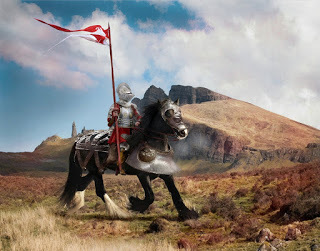
2ndFebruary
Yvonne Harlech
 Yvonne Harlech was born in Edinburgh where she developed a taste for legends and all things mystical. When her mother accepted a teaching job in Canada, her life took an unexpected turn. Grappling with a new country, Harlech’s growing consciousness was echoed in the wild landscape, the immigrant’s sense of exile and search for a personal voice. She went on to study English Literature at Concordia University and now lives in Cheshire with her husband. Harlech has written two historical novels, Mistress of the Temple and Harp of Joy, set in ancient Egypt. The books explore ancient Egypt’s mystical dimension, its dramatic myths and history. The author is now writing about Romano-Britain, where a new mythology emerges, and the birth of a new kingdom.
Yvonne Harlech was born in Edinburgh where she developed a taste for legends and all things mystical. When her mother accepted a teaching job in Canada, her life took an unexpected turn. Grappling with a new country, Harlech’s growing consciousness was echoed in the wild landscape, the immigrant’s sense of exile and search for a personal voice. She went on to study English Literature at Concordia University and now lives in Cheshire with her husband. Harlech has written two historical novels, Mistress of the Temple and Harp of Joy, set in ancient Egypt. The books explore ancient Egypt’s mystical dimension, its dramatic myths and history. The author is now writing about Romano-Britain, where a new mythology emerges, and the birth of a new kingdom.Yvonne loves to hear from readers, you can find her: Website Twitter
5th February
Elizabeth St.John

Elizabeth St.John was brought up in England and lives in California. To inform her writing, she has tracked down family papers and residences from Nottingham Castle, Lydiard Park, and Castle Fonmon to the Tower of London. Although the family sold a few castles and country homes along the way (it's hard to keep a good castle going these days), Elizabeth's family still occupy them - in the form of portraits, memoirs, and gardens that carry their imprint. And the occasional ghost. But that's a different story...
Elizabeth loves to hear from readers, you can find her... Website Facebook Twitter

6th February
Judith Arnopp
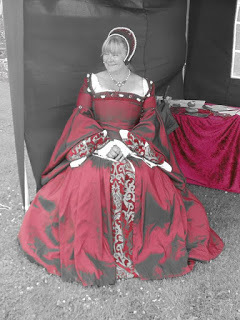 Judith Arnopp’s life-long passion for history eventually led her to the University of Wales where she gained a BA in English and Creative Writing, and a Masters in Medieval History.
Judith Arnopp’s life-long passion for history eventually led her to the University of Wales where she gained a BA in English and Creative Writing, and a Masters in Medieval History.Her first novel, Peaceweaver was published in 2009, quickly followed by The Forest Dwellers and The Song of Heledd but she remained largely unknown as an author until her first best-selling Tudor novel, The Winchester Goose. Since then she has continued to write in the Tudor era, producing five further novels covering the lives of Anne Boleyn, Katheryn Parr and Elizabeth of York.
The Beaufort Chronicles comprises of three volumes: The Beaufort Bride, The Beaufort Woman and The King’s Mother tracing the fascinating life of Margaret Beaufort. She is currently engaged in researching the Dissolution of the monasteries for her eleventh novel which is yet to be named.
Judith’s non-fiction work has also been published in various historical anthologies, the latest being Sexuality and Its Impact on History which will be published in March 2018 by Pen and Sword Books. You will also find her work on many on-line magazines and blogs. Judith is easily accessible on her webpage and blog or you can follow her on social media. Website Website Blog Facebook Twitter

7th February
Merryn Allingham
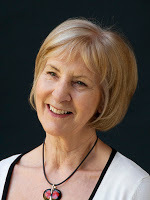 Merryn Allingham was born into an army family and spent her childhood on the move. Unsurprisingly, it gave her itchy feet and in her twenties she escaped from an unloved secretarial career to work as cabin crew and see the world. The arrival of marriage, children and cats meant a more settled life in the south of England where she has lived ever since. It also gave her the opportunity to go back to ‘school’ and eventually teach literature at university.Merryn has always loved books that bring the past to life, so when she began writing herself the novels had to be historical. Her latest books explore two pivotal moments in the history of Britain. The Buttonmaker’s Daughter is set in Sussex in the summer of 1914 as the First World War looms ever nearer and its sequel, The Secret of Summerhayes, forty years later in the summer of 1944 when D Day led to eventual victory in the Second World War. Along with the history, of course, there’s always plenty of mystery and romance to keep readers intrigued.You can find Merryn on:
Website
Facebook Twitter
Merryn Allingham was born into an army family and spent her childhood on the move. Unsurprisingly, it gave her itchy feet and in her twenties she escaped from an unloved secretarial career to work as cabin crew and see the world. The arrival of marriage, children and cats meant a more settled life in the south of England where she has lived ever since. It also gave her the opportunity to go back to ‘school’ and eventually teach literature at university.Merryn has always loved books that bring the past to life, so when she began writing herself the novels had to be historical. Her latest books explore two pivotal moments in the history of Britain. The Buttonmaker’s Daughter is set in Sussex in the summer of 1914 as the First World War looms ever nearer and its sequel, The Secret of Summerhayes, forty years later in the summer of 1944 when D Day led to eventual victory in the Second World War. Along with the history, of course, there’s always plenty of mystery and romance to keep readers intrigued.You can find Merryn on:
Website
Facebook Twitter
8th February
Juli D. Revezzo
 Juli D. Revezzo is a Florida girl with a love of speculative and romantic fiction and legend, and loves writing stories with all kinds of fantastical elements. She is the author of The Antique Magic series and the pnr/historical fantasy Celtic Stewards Chronicles series, the Gothic fantasy romance LADY OF THE TAROT, as well as the historical fantasy FRIGGAíS LOST ARMY, and short stories published in ETERNAL HAUNTED SUMMER, LUNA STATION QUARTERLY, among others. She is also a member of the Independent Author Network and the Magic Appreciation Tour. To learn more about this and future releases, visit: Website Facebook Twitter Mailing List
Juli D. Revezzo is a Florida girl with a love of speculative and romantic fiction and legend, and loves writing stories with all kinds of fantastical elements. She is the author of The Antique Magic series and the pnr/historical fantasy Celtic Stewards Chronicles series, the Gothic fantasy romance LADY OF THE TAROT, as well as the historical fantasy FRIGGAíS LOST ARMY, and short stories published in ETERNAL HAUNTED SUMMER, LUNA STATION QUARTERLY, among others. She is also a member of the Independent Author Network and the Magic Appreciation Tour. To learn more about this and future releases, visit: Website Facebook Twitter Mailing List 
9th February
Wayne Clark
 Wayne Clark was born in 1946 in Ottawa, Ont., Canada, but has called Montreal home since 1968. Woven through that time frame in no particular order have been interludes in Halifax, Toronto, Vancouver, Germany, Holland and Mexico.
Wayne Clark was born in 1946 in Ottawa, Ont., Canada, but has called Montreal home since 1968. Woven through that time frame in no particular order have been interludes in Halifax, Toronto, Vancouver, Germany, Holland and Mexico. By far the biggest slice in a pie chart of his career would be labelled journalism, including newspapers and magazines, as a reporter, editor and freelance writer. The other, smaller slices of the pie would also represent words in one form or another, in advertising as a copywriter and as a freelance translator. However, unquantifiable in a pie chart would be the slivers and shreds of time stolen over the years to write fiction.

14th FebruaryVanda Vadas
 Before residing in Australia, Vanda’s birthplace and early childhood years were spent in Papua New Guinea. At the age of eleven, a holiday in England sparked an interest in the days of old. Castles, ruins and discovering Jane Austen novels inspired a life-long interest in all things historical, a passion that later kick-started Vanda’s desire to write historical fiction.
Before residing in Australia, Vanda’s birthplace and early childhood years were spent in Papua New Guinea. At the age of eleven, a holiday in England sparked an interest in the days of old. Castles, ruins and discovering Jane Austen novels inspired a life-long interest in all things historical, a passion that later kick-started Vanda’s desire to write historical fiction.Her locale and global visits to faraway places inspire Vanda’s creation of fictitious characters and dramas – past and present – set against authentic and geographical backdrops. Her debut novel, The Pirate Lord (Random House Australia) was an Amazon #1 Best Seller in Historical Romance. Her next novel, a Scottish Historical set post the Battle of Culloden, will be published later this year.
The Gold Coast is home to Vanda and her husband where they enjoy walks along world-renowned beaches or a quiet getaway to the lush hills of the Hinterland.
Vanda loves to hear from her readers. You can find her at:
Website Facebook Twitter

15th February
Matthew Harffy
 Matthew Harffy lived in Northumberland as a child and the area had a great impact on him. The rugged terrain, ruined castles and rocky coastline made it easy to imagine the past. Decades later, a documentary about Northumbria's Golden Age sowed the kernel of an idea for a series of historical fiction novels. The first of them is the action-packed tale of vengeance and coming of age, THE SERPENT SWORD.
Matthew Harffy lived in Northumberland as a child and the area had a great impact on him. The rugged terrain, ruined castles and rocky coastline made it easy to imagine the past. Decades later, a documentary about Northumbria's Golden Age sowed the kernel of an idea for a series of historical fiction novels. The first of them is the action-packed tale of vengeance and coming of age, THE SERPENT SWORD.Matthew has worked in the IT industry, where he spent all day writing and editing, just not the words that most interested him. Prior to that he worked in Spain as an English teacher and translator. Matthew lives in Wiltshire, England, with his wife and their two daughters.
Matthew loves to hear from readers, you can find him: Website Facebook Twitter

16th February
Derek Birks
 Derek was born in Hampshire in England but spent his teenage years in Auckland, New Zealand, where he still has strong family ties. On his return to England, after eight years abroad, he read history at Reading University.As long as he can remember, Derek has loved books and he always wanted to write. By the age of 17, he was writing stories, songs, poetry – in fact virtually anything. Inevitably, after university, work and family life took precedence and for many years he taught history in a secondary school. Though he enjoyed teaching immensely, he also found a creative outlet in theatrical activities: stage-managing musicals and outdoor Shakespeare, including a performance of Henry VIII for the Queen’s Silver Jubilee in 1977 at Windsor Castle.In 2010 Derek took early retirement to concentrate on writing. He aims to write action-packed fiction, rooted in accurate history. Though he is interested in everything historical, his particular favourite is the late medieval period. So far he has completed one 4-book series, entitled
Rebels and Brothers
, which is set during the Wars of the Roses and he has now embarked on another Wars of the Roses series:
The Craft of Kings.
The series begins with
Scars from the Past.
‘As with all good historical fiction, the reader learns fascinating period detail while being entertained by an experienced author who knows his trade.’ Historical Novel Society review of
Scars from the Past
Apart from his writing, he enjoys travelling – often to carry out research for his books - and also spends his time gardening, walking and taking part in archaeological digs.You can find Derek...Twitter Website Blog Facebook Amazon author page
Derek was born in Hampshire in England but spent his teenage years in Auckland, New Zealand, where he still has strong family ties. On his return to England, after eight years abroad, he read history at Reading University.As long as he can remember, Derek has loved books and he always wanted to write. By the age of 17, he was writing stories, songs, poetry – in fact virtually anything. Inevitably, after university, work and family life took precedence and for many years he taught history in a secondary school. Though he enjoyed teaching immensely, he also found a creative outlet in theatrical activities: stage-managing musicals and outdoor Shakespeare, including a performance of Henry VIII for the Queen’s Silver Jubilee in 1977 at Windsor Castle.In 2010 Derek took early retirement to concentrate on writing. He aims to write action-packed fiction, rooted in accurate history. Though he is interested in everything historical, his particular favourite is the late medieval period. So far he has completed one 4-book series, entitled
Rebels and Brothers
, which is set during the Wars of the Roses and he has now embarked on another Wars of the Roses series:
The Craft of Kings.
The series begins with
Scars from the Past.
‘As with all good historical fiction, the reader learns fascinating period detail while being entertained by an experienced author who knows his trade.’ Historical Novel Society review of
Scars from the Past
Apart from his writing, he enjoys travelling – often to carry out research for his books - and also spends his time gardening, walking and taking part in archaeological digs.You can find Derek...Twitter Website Blog Facebook Amazon author page 
17th February
Tom Williams
 Have you ever noticed how many authors are described as ‘reclusive’? I have a lot of sympathy for them. My feeling is that authors generally like to hide at home with their laptops or their quill pens and write stuff. If they enjoyed being in the public eye, they’d be stand-up comics or pop stars.Nowadays, though, writers are told that their audiences want to be able to relate to them as people. I’m not entirely sure about that. If you knew me, you might not want to relate to me at all. But here in hyperspace I apparently have to tell you that I’m young and good looking and live somewhere exciting with a beautiful partner, a son who is a brain surgeon and a daughter who is a swimwear model. Then you’ll buy my book.Unfortunately, that’s not quite true. I’m older than you can possibly imagine. (Certainly older than I ever imagined until I suddenly woke up and realised that age had snuck up on me.) I live in Richmond, which is nice and on the outskirts of London which is a truly amazing city to live in. My wife is beautiful but, more importantly, she’s a lawyer, which is handy because a household with a writer in it always needs someone who can earn decent money. My son has left home and we never got round to the daughter.We did have a ferret, which I thought would be an appropriately writer sort of thing to have around but he eventually got even older than me (in ferret years) and died. I’d try to say something snappy and amusing about that but we loved that ferret and snappy and amusing doesn’t quite cut it.I street skate and ski and can dance a mean Argentine tango. I’ve spent a lot of my life writing very boring things for money (unless you’re in Customer Care, in which case ‘Dealing With Customer Complaints’ is really, really interesting). Now I’m writing for fun.If you all buy my books, I’ll be able to finish the next ones and I’ll never have to write for the insurance industry again and that will be a good thing, yes? So you’ll not only get to read a brilliant novel but your karmic balance will move rapidly into credit.Can I go back to being reclusive now?Tom loves to hear from readers. You can contact him:Website Facebook Twitter
Have you ever noticed how many authors are described as ‘reclusive’? I have a lot of sympathy for them. My feeling is that authors generally like to hide at home with their laptops or their quill pens and write stuff. If they enjoyed being in the public eye, they’d be stand-up comics or pop stars.Nowadays, though, writers are told that their audiences want to be able to relate to them as people. I’m not entirely sure about that. If you knew me, you might not want to relate to me at all. But here in hyperspace I apparently have to tell you that I’m young and good looking and live somewhere exciting with a beautiful partner, a son who is a brain surgeon and a daughter who is a swimwear model. Then you’ll buy my book.Unfortunately, that’s not quite true. I’m older than you can possibly imagine. (Certainly older than I ever imagined until I suddenly woke up and realised that age had snuck up on me.) I live in Richmond, which is nice and on the outskirts of London which is a truly amazing city to live in. My wife is beautiful but, more importantly, she’s a lawyer, which is handy because a household with a writer in it always needs someone who can earn decent money. My son has left home and we never got round to the daughter.We did have a ferret, which I thought would be an appropriately writer sort of thing to have around but he eventually got even older than me (in ferret years) and died. I’d try to say something snappy and amusing about that but we loved that ferret and snappy and amusing doesn’t quite cut it.I street skate and ski and can dance a mean Argentine tango. I’ve spent a lot of my life writing very boring things for money (unless you’re in Customer Care, in which case ‘Dealing With Customer Complaints’ is really, really interesting). Now I’m writing for fun.If you all buy my books, I’ll be able to finish the next ones and I’ll never have to write for the insurance industry again and that will be a good thing, yes? So you’ll not only get to read a brilliant novel but your karmic balance will move rapidly into credit.Can I go back to being reclusive now?Tom loves to hear from readers. You can contact him:Website Facebook Twitter
20th February
Mercedes Rochelle
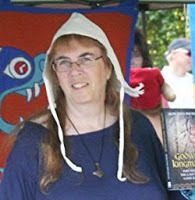 Born in St. Louis MO with a degree from University of Missouri, Mercedes Rochelle learned about living history as a re-enactor and has been enamored with historical fiction ever since. A move to New York to do research and two careers ensued, but writing fiction remains her primary vocation. She lives in Sergeantsville, NJ with her husband in a log home they had built themselves.
Born in St. Louis MO with a degree from University of Missouri, Mercedes Rochelle learned about living history as a re-enactor and has been enamored with historical fiction ever since. A move to New York to do research and two careers ensued, but writing fiction remains her primary vocation. She lives in Sergeantsville, NJ with her husband in a log home they had built themselves.Mercedes loves to hear from readers. You can find her… Website Blog Facebook Twitter
21st February
Erika M Szabo
 I became an avid reader at a very early age, thanks to my dad who introduced me to many great books. I write alternate history, romantic fantasy, magical realism novels as well as fun, educational, and bilingual books for children ages 4-12 about acceptance, friendship, family, and moral values such as accepting people with disabilities, dealing with bullies, and not judging others before getting to know them. I also like to encourage children to use their imagination and daydream about fantasy worlds.
I became an avid reader at a very early age, thanks to my dad who introduced me to many great books. I write alternate history, romantic fantasy, magical realism novels as well as fun, educational, and bilingual books for children ages 4-12 about acceptance, friendship, family, and moral values such as accepting people with disabilities, dealing with bullies, and not judging others before getting to know them. I also like to encourage children to use their imagination and daydream about fantasy worlds.Find me on: Website Blog Facebook Twitter

22nd February
Catherine T Wilson
 Catherine was born in Burnley, England, but moved to Australia when she was eleven months old. She grew up in Elizabeth, South Australia, relocating to Queensland when she was fourteen. She worked in communications, before finally deciding to fulfil her dream as a writer. The raw draft of her first novel, a Viking romance, won an encouragement award of $1,000 from six hundred entries, in a popular women’s magazine competition. She visited Europe in 2006 to witness the annual re-enactment of ʻThe Battle of Agincourt,ʼ and then travelled extensively throughout Britain and France, researching material for Lions and Lilies. In 2016, she returned to Europe for further research in Morocco, Spain, Portugal and France. Her visit to Chartres cathedral to ‘walk the labyrinth’ and then stroll through the medieval old town during its summer light show was an experience she’ll never forget. And the second visit to Bellegarde remains among her most treasured memories.
Catherine was born in Burnley, England, but moved to Australia when she was eleven months old. She grew up in Elizabeth, South Australia, relocating to Queensland when she was fourteen. She worked in communications, before finally deciding to fulfil her dream as a writer. The raw draft of her first novel, a Viking romance, won an encouragement award of $1,000 from six hundred entries, in a popular women’s magazine competition. She visited Europe in 2006 to witness the annual re-enactment of ʻThe Battle of Agincourt,ʼ and then travelled extensively throughout Britain and France, researching material for Lions and Lilies. In 2016, she returned to Europe for further research in Morocco, Spain, Portugal and France. Her visit to Chartres cathedral to ‘walk the labyrinth’ and then stroll through the medieval old town during its summer light show was an experience she’ll never forget. And the second visit to Bellegarde remains among her most treasured memories.Catherine T lives on a small bushland property, on a mountain range west of Brisbane and yes, you need only walk into her house to see her first love. Pictures of maidens on horseback grace the walls, and every corner and mantel is filled with knights and battle axes, the bookshelves overflowing with tales of chivalry. You can contact Catherine on: Website Facebook Twitter Blog

23rd February
M.T. Magee
 My name is M.T.Magee I write bestselling YA Historical Medieval Fantasy that is beautifully romantic with whispers of Gaelic legend. On Mar. 31st The Treasure of Gwenlais received the 2015 Silver Medal Winner of Ireland's Drunken Druid Award Finalist for IAN Book of the Year Award 2016 for First Novel on Aug. 31st. On Sept.1st 2016 I received the Finalist Award for Readers' Favorite Book Awards Voted #1 On Listopia's Best Fantasy Romance (not urban).
My name is M.T.Magee I write bestselling YA Historical Medieval Fantasy that is beautifully romantic with whispers of Gaelic legend. On Mar. 31st The Treasure of Gwenlais received the 2015 Silver Medal Winner of Ireland's Drunken Druid Award Finalist for IAN Book of the Year Award 2016 for First Novel on Aug. 31st. On Sept.1st 2016 I received the Finalist Award for Readers' Favorite Book Awards Voted #1 On Listopia's Best Fantasy Romance (not urban).I live in New England on our small farm with my husband and son. We raise an assortment of silly goats, quiet rabbits, far too many ducks and chickens, and a high strung Border Collie cross named Gronk.
M.T.Magee loves to hear from readers, you can find her: Facebook Twitter

26th February
Michael Wills
 Michael E Wills was born on the Isle of Wight and educated at the Priory Boys School and Carisbrooke Grammar. He trained as a teacher at St Peter’s College, Saltley, Birmingham, before working at a secondary school in Kent for two years.
Michael E Wills was born on the Isle of Wight and educated at the Priory Boys School and Carisbrooke Grammar. He trained as a teacher at St Peter’s College, Saltley, Birmingham, before working at a secondary school in Kent for two years.After re-training to become a teacher of English as a Foreign Language he worked in Sweden for thirteen years. During this period, he wrote several English language teaching books. His teaching career has included time working in rural Sweden, a sojourn that first sparked his now enduring interest in Scandinavian history and culture – an interest that after many years of research, both academic and in the field, led him to write Finn’s Fate and the sequel novel, Three Kings – One Throne. His interest in teaching children led him to start writing stories for young readers and in 2015 he published the first two of a quartet of novels for 8 -13 year-olds in a series called “Children of the Chieftain”.
Today, Michael works part-time as Ombudsman for English UK, the national association of English language providers. Though a lot of his spare time is spent with grandchildren, he also has a wide range of interests including researching for future books, writing, playing the guitar, carpentry and electronics. He spends at least two months a year sailing his boat which is currently in Scandinavia.
You can find out more and stay up-to-date by visiting his website.

27th February
Carol McGrath
 From a young age my passion was reading historical novels and biography. Now I am writing them. My debut novel, The Handfasted Wife was published by Accent Press in May 2013. The Handfasted Wife is the first novel in a trilogy about the Norman Conquest from the point of view of the royal women. Its subject is Edith Swan-Neck, King Harold’s common-law / handfasted wife. The Swan Daughter and The Betrothed Sister followed in 2014 and 2015.
From a young age my passion was reading historical novels and biography. Now I am writing them. My debut novel, The Handfasted Wife was published by Accent Press in May 2013. The Handfasted Wife is the first novel in a trilogy about the Norman Conquest from the point of view of the royal women. Its subject is Edith Swan-Neck, King Harold’s common-law / handfasted wife. The Swan Daughter and The Betrothed Sister followed in 2014 and 2015.I studied for an MA at Queens University Belfast’s Seamus Heaney Centre for Creative Writing. Later I worked on the MPhil in Creative Writing at Royal Holloway, University of London. Life is not all about academic pursuits and writing books. I travel extensively, enjoy photography and love spending time with my two children, husband and our home and garden. Moreover, visits to a location here and in Europe that features in my books is the greatest excuse of all to lose oneself in the past.
Carol loves to hear from readers, you can find her: Website Twitter

28th February
M.K.Tod
 M.K. Tod is an award-winning blogger and the author of three works of historical fiction. In 2004, Mary interrupted her business career to spend a few years as an expat in Hong Kong. That life-altering experience led to a new career and passion as a writer. Mary writes for the Historical Novel Society and the Washington Independent Review of Books. She is also known for her in-depth analysis of historical fiction and international reader surveys. M.K.Tod loves to hear from readers, you can find her : Blog Facebook Goodreads
Website
M.K. Tod is an award-winning blogger and the author of three works of historical fiction. In 2004, Mary interrupted her business career to spend a few years as an expat in Hong Kong. That life-altering experience led to a new career and passion as a writer. Mary writes for the Historical Novel Society and the Washington Independent Review of Books. She is also known for her in-depth analysis of historical fiction and international reader surveys. M.K.Tod loves to hear from readers, you can find her : Blog Facebook Goodreads
Website

Published on January 31, 2018 08:00
January 30, 2018
Author’s Inspiration ~ Kieran Higgins #Arthurian #HistFic @kieran__higgins
Author’s Inspiration
I have always loved the Arthurian myths, and the thing I love most about them is that they can only be enhanced by the multiple retellings and reimaginings in novels, films and TV shows. As we discover more history, or a new version of the legend, it only adds to the magic of the original story, giving us new angles and new perspectives from which to explore a key cultural cornerstone.
The women in the Arthurian myths play extremely important roles, and are often catalysts to the action, if not taking a direct part in it themselves. But somehow take up so little of the narrative, and are often portrayed in an unnecessarily negative light. Apparently, this was because of our two biggest sources. Thomas Malory was a massive misogynist, and Chretien De Troyes’ had a female patron who was mostly concerned with the courtly love aspect and action scenes, not exactly the women themselves.
I decided to give them their turn in the spotlight. I picked the most important woman of all, and seemingly the most fun – the villain. I wanted to write about Morgan LeFay, and round her out. Explain why she did what she did. Give her a bit of understanding and sympathy.
But…Morgan LeFay is hard to write.
The way I wanted to portray her, she is very unlikeable. A woman like Morgan, being so intelligent, should realise all the horrible things she does might not get her what she wants. The beliefs she holds, a woman like Morgan should realise they’re fundamentally flawed. She was a nightmare to write. She wasn’t even enjoyable in a love-to-hate sort of way.
Then I thought, what about Morgause? And then I thought: NO. If you know me at all, you know that I am fundamentally uncomfortable writing sex scenes. Morgause has a lot of sex, and it would be a very boring novel for the main character to do something, and then announce at random intervals that she had sex. It might have been mind-blowing, but you didn’t get to read about it.
Plus, I wanted to stay as true to the original myths as I could, and Morgause has an arguably limited role.
Then I discovered Arthur had another sister.
And she is rarely written about. And boom – it was like an explosion had gone off in my mind. And the only way to put it out the fires it started was to write this novel. Elaine was a perfect character. She is a sister to all the big players, and as the Queen of Garlot and husband of one of Arthur’s most trusted generals, she had ringside seats to all the action. Because there is so little about her in the original myths, I could create her from the ground up. There were certain events that were non-negotiable, but all the rest I could create. She could be the perfect window into Camelot.
Whether or not Elaine was a historical person is up for debate, more so than the debate of whether King Arthur was real or not. But in case she was, I want to thank her. I want to acknowledge the fundamental role she had in helping me achieve something I have wanted for all of my short lifetime, even though history, and its bastard cousin legend, seem to have largely forgotten her.
The Forgotten Sister. See what I did there?
Links for Purchase
Amazon
About the author
 Kieran is a Belfast-born author. He wrote his first novel at age 5 - he also received his first rejection letter at this age. He has been writing ever since and has produced his debut novel The Forgotten Sister, an Arthurian retelling, in 2016. This was quickly followed by Mists Over Newbroke, a chilling gothic horror novella.
Kieran is a Belfast-born author. He wrote his first novel at age 5 - he also received his first rejection letter at this age. He has been writing ever since and has produced his debut novel The Forgotten Sister, an Arthurian retelling, in 2016. This was quickly followed by Mists Over Newbroke, a chilling gothic horror novella. Inspired by JK Rowling, Garth Nix and Mary Stewart, Kieran writes the type of stories he wants to read - exciting tales full of compelling characters with believable motivations, captivating locations, strong females and, most importantly, magic.
A devoted book lover, Kieran can also be found on Instagram and YouTube, talking about the stories you need to read.You can also find Kieran on: Twitter YouTube
Published on January 30, 2018 23:00
January 29, 2018
Life in Edward III England by Anna Belfrage #History #Medieval @abelfrageauthor
Life in Edward III England by Anna Belfrage
Here, take my hand. Come on, I won’t hurt you. Nope, just grab hold of me so that I can drag you with me, seven centuries backwards in time. What, you don’t want to? I promise I’ll bring you back. Cross my heart. (Sheesh: some people are SO unadventurous!)Now that you’ve overcome your fear, allow me to introduce you to life in the 14th century. What? Oh, you think it smells. Well, yes, I suppose it does. So much humanity squished together—at least here in medieval London where the houses are sort of crammed in side by side. This, however, is a good neighbourhood. Rich, even. If you just follow me inside here (mind the high threshold), I’ll show you around in this well-appointed 14thcentury home. Here’s the main room—look at the paintings that decorate the plaster walls, pretty, aren’t they? And no, it isn’t true our medieval ancestors only hung their Turkish carpets on the wall or draped them over a table. When Eleanor of Castile became queen of England back in the previous century she introduced the fashion of actually having a carpet or two on the floors—if you can afford it. This rich London vintner apparently can—but you can see they usually walk around the carpet, lying there to display their wealth. Note the silverware on the table, the beeswax candles on their holders. Only rich people have beeswax candles—the rest have to make do with rushlights or tallow candles. Tallow candles stink. Rushlights give off a smoky light that irritates the eyes. No wonder most people go to bed once it’s dark. Our vintner even has a couple of glass goblets. Probably come all the way from Venice, as has the silk his wife is wearing. Well, the silk comes from even further afield, but those Venetians have hogged the Eastern markets—just as the Hanseatic merchants have cornered the herring market.
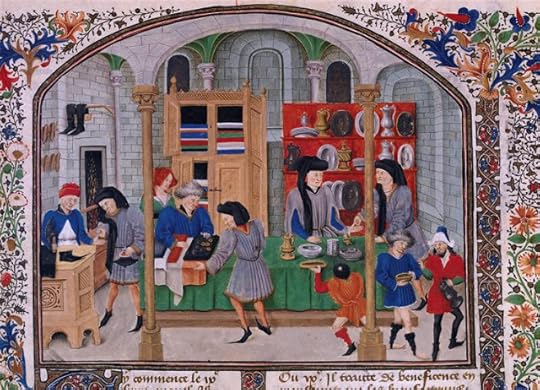
Other than the treasures already described, this room has one more feature that shout to the world our vintner—let us call him Master Ralph—is not only rich, but also an early adopter. His windows are all glassed, small diamonds of greenish glass allowing in some daylight. This room is where the master of the house entertains and conducts business. It is also where he and his family eat and as this is a fish day they’ve just enjoyed a meal of stockfish. I know: enjoy and stockfish don’t really go together, but in this household the fish (which is bought dried, left to soak back into shape in lye and water and then boiled) is served with a nice creamy allspice sauce. If you look at the lady of the house, you will note she’s wearing both veil and wimple. The cote-hardie is of excellent cut, a deep blue shade embroidered in green that matches her kirtle. A ring or two on her fingers—not at all as ostentatious as her husband, whose various digits glitter with gold and jewels. The lady has a number of keys hanging from her embroidered girdle. One of these keys is for the spice chest in which she stores everything from cardamom to black pepper and cane sugar. The sugar is extremely expensive, comes in miniature loafs and is, according to Ralph, an unnecessary indulgence when there is honey to use instead. Not that he is aware of it, but Ralph is right: sugar consumption in his time and age is as yet not the addiction it will become, but come Tudor times, the rich and wealthy will lose most of their teeth due to their sugar craving.After their meal, the family and their guest—a gaunt Flemish gentleman named Nicholaas who trades in wool and eyes the vintner’s wife with covetous eyes whenever Ralph looks elsewhere—enjoy a goblet or two of wine. Nicholaas has news of the ongoing conflict in France, shaking his head as he recounts the disaster of Crécy.
“Disaster?” Ralph bristles. Good King Edward routed the perfidious French!
“For the French.” Nicholaas grins, adjusting the lace-trimmed coif that adorns his head. “All that ransom money will fill the English king’s coffers.” They discuss the impact of the war on trade, agreeing these are good times for men with wares to sell, before Ralph decided it is time to retire for the night. His guest has been offered a bed by the hearth in the main room but has declined, saying he’ll dare the curfew and return to the room he’s rented in the inn a few houses down the lane. Besides, he adds, after all this good food and wine, he needs the privy.Ralph bids Nicholaas goodnight, orders one of his apprentices to bank the fires while he locks the doors—both to the house and to his storage rooms. He ascends the stairs with a lit taper. The bedroom door is open. In the pallet bed sleeps Ralph’s pride and joy, his two sons. Two heads of tousled curls lie close together, and he crouches to adjust their blankets whispering “may the Lord keep you safe this night and all other nights.”
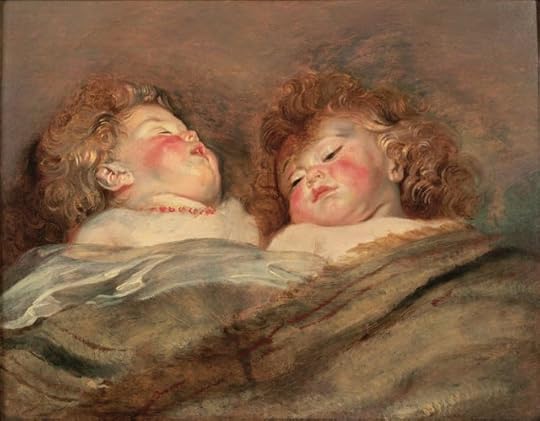
He blows out the taper and undresses. His wife helps him with his embroidered robe, hanging it carefully from one of the clothes pegs. She is already ready for bed, the hair she never displays in public fully visible, a dark braid snaking down her back. In only her chemise, she orders the room, grumbling—as mothers have done through the ages—about toys and clothes left all over the place.Ralph has finished washing face and hands and retires to their bed. He discards his shirt, throwing it to land at the foot of the bed. His wife casts him a look from under her eyelashes. “Come, Elizabeth,” he says. And she does, blowing out the single candle on her way. Sheets rustle. She giggles. He calls her his dear heart. Outside, Nicholaas braves the rain and dark, arriving safely at the inn. He orders ale, studying the maid’s arse as she hastens to do his bidding. What will it cost, he muses. A groat? He looks for the innkeeper. Their eyes meet. The innkeeper holds up two fingers. Two groats? Nicholaas isn’t sure the scrawny lass is worth it, but an evening in the company of the fair Elizabeth has left him with an itch. He wonders, as he always does, when Ralph will properly look at his sons and see just who they resemble. Nicholaas smiles into his ale and decides the maid will do for tonight.The maid doesn’t want to accompany the Flemish trader upstairs, but when Jack the innkeeper gives her that look she knows she has no choice. She needs her earnings—how else to pay for the upkeep of her daughter who lives with the innkeeper’s mother? She sighs and smooths at the worn fabric of her skirts. Work is hard to find for an unwed mother and pleasing the Flemish trader will leave her with an extra groat. Soon enough, she’ll have enough saved to buy herself a new kirtle. Maybe it should be in yellow, she thinks bitterly as she mounts the stairs. The colour of a harlot for the inn’s little whore. Jack watches her out of sight before blowing out the few candles he still has burning. The fire is carefully banked—he does that himself. It’s not that long ago one of the louts that went for his servant almost managed to set the whole building alight due to his careless handling of the fires. The innkeeper hums to himself as he goes about his tasks. His little country cousin provides a welcome addition to his earnings and should she balk he can always threaten her with turning her out—her and her bastard brat both.
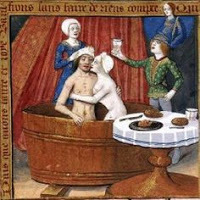 In the kitchen the cook has set the oats to soak for tomorrow. Bowls and mugs are neatly stacked and the pantry is locked. Jack calls for one of the younger lads that work for him. His tunic is worn thin over his elbows, the hose has been patched so many times it is a miracle it still holds together, and the coif covering the lad’s hair is in need of a wash. Jack sets him to sweeping out the ashes in the large hearth. They are still hot and by the time he’s done, the lad will likely have burns over his hands and forearms. Will teach him to be more careful next time.
In the kitchen the cook has set the oats to soak for tomorrow. Bowls and mugs are neatly stacked and the pantry is locked. Jack calls for one of the younger lads that work for him. His tunic is worn thin over his elbows, the hose has been patched so many times it is a miracle it still holds together, and the coif covering the lad’s hair is in need of a wash. Jack sets him to sweeping out the ashes in the large hearth. They are still hot and by the time he’s done, the lad will likely have burns over his hands and forearms. Will teach him to be more careful next time. Jack steps outside into the small yard. There’s a stench from the privy that has him reminding himself he must send over the bridge to the tanner in Southwark and ask him if he still wants to buy the piss. He cranes his head back and peers up at the stars.
“The firmaments of heaven,” he murmurs, scratching his chest. He sniffs his sleeve. Time for a bath, he concludes. Yes, a nice long bath down at the bath house. Tomorrow, God willing.
Right, dear reader, it is time for us to leave Jack, his nameless cousin, Nicholaas, Ralph and his false wife. You want to know what happens next? Will Ralph find out, will the cousin escape her imposed prostitution? The answer to both those questions is no. What? You want me to give the cousin a chance? She’s already been given one, saved from starving to death on the street by Jack. I know, I know: all very sad, but life back then was harsh. There’s nothing we can do to change that, so before you get permanently stuck here in the mid-fourteenth century take hold of my hand, okay? Back we go to our time, to modern comforts and things like tea and chocolate. But in difference to Jack, we can rarely see the stars winking down at us in London anymore which is a shame, IMO. The price of progress, I suppose!
Anna Belfrage
 Had Anna been allowed to choose, she’d have become a professional time-traveller. As such a profession does not exists, she settled for second best and became a financial professional with two absorbing interests, namely history and writing. Presently, Anna is hard at work with The King’s Greatest Enemy, a series set in the 1320s featuring Adam de Guirande, his wife Kit, and their adventures and misfortunes in connection with Roger Mortimer’s rise to power. The fourth book in the series, The Cold Light of Dawn, will be published in February 2018
Had Anna been allowed to choose, she’d have become a professional time-traveller. As such a profession does not exists, she settled for second best and became a financial professional with two absorbing interests, namely history and writing. Presently, Anna is hard at work with The King’s Greatest Enemy, a series set in the 1320s featuring Adam de Guirande, his wife Kit, and their adventures and misfortunes in connection with Roger Mortimer’s rise to power. The fourth book in the series, The Cold Light of Dawn, will be published in February 2018 When Anna is not stuck in the 14th century, chances are she’ll be visiting in the 17th century, more specifically with Alex and Matthew Graham, the protagonists of the acclaimed The Graham Saga. This series is the story of two people who should never have met – not when she was born three centuries after him. A ninth instalment has recently been published, despite Anna having thought eight books were enough. Turns out her 17th century dreamboat and his time travelling wife didn’t agree… Anna can be found on her website, on Facebook and on her blog. Or on twitter and Amazon.
When Anna is not stuck in the 14th century, chances are she’ll be visiting in the 17th century, more specifically with Alex and Matthew Graham, the protagonists of the acclaimed The Graham Saga. This series is the story of two people who should never have met – not when she was born three centuries after him. A ninth instalment has recently been published, despite Anna having thought eight books were enough. Turns out her 17th century dreamboat and his time travelling wife didn’t agree… Anna can be found on her website, on Facebook and on her blog. Or on twitter and Amazon.
Published on January 29, 2018 23:00
January 28, 2018
The day the earth shook, New Zealand’s largest earthquake, Wellington, January 1855 #History #Blogtour #HistoricalFiction @hfvbt @KAServian1
Historical Virtual Book Tour Presents....

The day the earth shook, New Zealand’s largest earthquake, Wellington, January 1855
By K.A. Servian
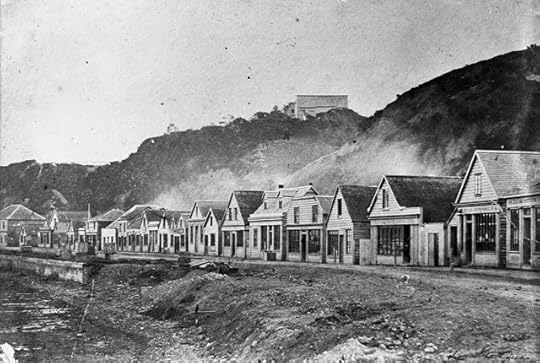 p.p1 {margin: 0.0px 0.0px 0.0px 0.0px; font: 13.0px Arial; -webkit-text-stroke: #000000} span.s1 {font-kerning: none}
p.p1 {margin: 0.0px 0.0px 0.0px 0.0px; font: 13.0px Arial; -webkit-text-stroke: #000000} span.s1 {font-kerning: none} Lambton Quay, Wellington 1850s. Donated by Denton, Frank J, 1869-1963 : Collection of negatives, prints and albums. Ref: 1/2-003926-G. Alexander Turnbull Library, Wellington, New Zealand.
The small settlement of Wellington celebrated its fifteenth anniversary on Monday the 22nd of January 1855. With the harbour filled with visiting ships, the town’s inhabitants enjoyed organised celebrations including a whale-boat race with a prize of £15. Horse-racing was to take place at Burnham water in the centre of Miramar Peninsula where a track had been formed amongst the dunes and punters from all over the country were gathering. Unfortunately, rain and a strong North-westerly wind cut the day’s events short and many locals returned to town while the visitors set up tents beside the track.A few seconds before 9.17pm rumbling filled the air. The sound was followed by shaking so violent that it was impossible to remain standing. Houses creaked and groaned and chimneys tumbled. The 8.2 magnitude earthquake lasted only fifty seconds, but before the shaking died away the sea rose up two and a half metres and inundated the shops lining Beach Street on the seafront. The Miramar isthmus, where the races had taken place, was swamped and a nine-metre high wave swept Palliser Bay. The water receded but then approached and pulled back from the shore every twenty to twenty five minutes for the next eight hours as if the harbour were a huge bowl with water sloshing about within it. Ships at anchor were floating one minute and sitting on the drained seabed the next. Panic gripped the town’s inhabitants after the first shock. Shouts filled the night air as people rushed about in the darkness assisting the injured and searching for loved ones lost in the chaos. Astoundingly, there were relatively few serious injuries and only one death in Wellington as a result of the quake. Wellington was (and still is today) no stranger to large earthquakes. New settlers were rattled on the 26th of May 1840 and the town had to be rebuilt after a series of severe shakes in 1848 devastated the fledgling settlement.The mega-quake of 1855 was the largest recorded in New Zealand’s history and caused damage throughout the central region of the country. The ground was permanently shifted horizontally by twelve metres and lifted six and a half metres along the main fault and aftershocks were felt for nine months. The seabed was raised so much along the foreshore that the new ground was used as the beginning of a huge land reclamation project and flat land that appeared between the Miramar Peninsula and the main town has become the sight of Wellington’s international airport.
 p.p1 {margin: 0.0px 0.0px 0.0px 0.0px; font: 13.0px Arial; -webkit-text-stroke: #000000} span.s1 {font-kerning: none}
p.p1 {margin: 0.0px 0.0px 0.0px 0.0px; font: 13.0px Arial; -webkit-text-stroke: #000000} span.s1 {font-kerning: none} Lambton Quay 2017. ©Nick Servian Photography
The Moral Compass is set predominantly in Wellington in 1853/4. In an early version of the manuscript, the main character, Florence, experiences the 1855 earthquake and its aftermath. However, this scene was dropped from later revisions and it is her brother, Bertram, who lives through the disaster and tells her about the experience in letters. I included letters and diary entries throughout The Moral Compass. Much of my research for the novel came in these forms, so it seemed appropriate to continue the Victorian tradition of using personal writing to record and communicate daily life. References: Grapes, R. (2000). Magnitude Eight Plus, New Zealand’s Biggest Earthquake. Wellington, New Zealand. Victoria University PressGrapes, R. (2011). The Visitation, The Earthquakes of 1848 and the Destruction of Wellington. Wellington, New Zealand. Victoria University Press
Here is my imagining of the letter Bertram send to Florence after the quake:Florrie, I have to tell you of a terrible event that occurred here a couple of weeks ago. It was the day of the anniversary celebrations and we had been out to Burnham Water for the races. The weather had been foul all afternoon, so we headed home early taking Jack’s old horse, Nelly, and the cart over the Te Aro saddle. We had just settled down after dinner when a rumble similar to that of a passing carriage filled the air. It was late for anyone to be out, especially in this wild weather, so I was looking through the window to see who was passing when, without warning, the whole room lurched sideways. It was the strangest feeling being tossed about on one’s own sofa like a rag doll. The noise became deafening as the rumbling was joined by the timbers of the house creaking and everything we owned clattering like Billy o. Then damn me if the carriage clock on the mantle didn’t fly off and hit me!I decided that it was time to get out just as that ugly painting above the fireplace came crashing down narrowly missing my head. I bundled Areta out into the hallway and a moment later, there was an almighty smash. Dust and sparks shot from the fireplace in a great cloud and bricks crashed through the ceiling, bringing chunks of plaster and wood down with them right where we had just been standing. I told Areta to go to the kitchen to get Whina who I could hear screaming above the din. But as I tried to go up the stairs to get Tamati, The banister sprung from the uprights and crashed onto the treads and I was forced to scramble over the splintered wood. Just as I got to the top, the whole lot collapsed. With the stairs gone, I had to climb out the window onto the washhouse roof and jump to the ground with my son cradled in my arms.By now, the shaking had stopped, but Whina was still making a hell of a racket in the kitchen. The back door was hanging off its hinges, so I was able to get back inside. The scene that met me in the kitchen was one of utter devastation. The floor was ankle deep in broken glass and crockery and everything was coated in a slimy film of preserved fruit. All that hard work you and Areta did getting those peaches saved was for naught I’m afraid.Whina and Areta were sheltering under the table so I told them to come outside. But they just clung to each other crying and refusing to move.Then the ground started shuddering again. Not as bad a last time, but still bloody terrifying. It’s then that I noticed that the ceiling was bulging. A crack appeared beside the hearth and ran across the plaster. I shouted again to the women to get out and thank God they did because just as they reached the doorway, the ceiling split open and bricks tumbled into the room, crashing onto the table and crushing it. I tell you, Florrie, it was the scariest thing I’ve ever been through. The ground kept shaking every few minutes all that night. Everyone in town was shouting, ringing bells and running about in the dark. It wasn’t until daylight that we saw the full extent of the damage. All the shops on Lambton Quay were destroyed, as were the parliament buildings. The Wellington Hotel was a wreak and the poor old Baron caught it. Apparently, a painting fell on him. If I’m honest, I’m amazed that there weren’t more deaths seeing the state of the place. We’ve been living in Jack’s old tent pitched in the front garden since that night until we can find someone to rebuild the chimney and replace the windows. But with the whole town in such a mess, it’ll be some time. Just count yourself lucky that you and Beaufort left when you did.If you’re able to send some money to help us repair the cottage I’d be most grateful.
Your brother, Berty.
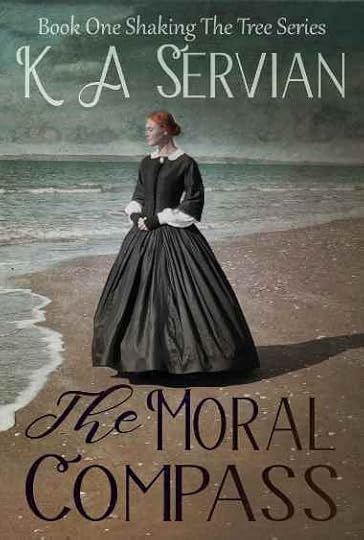
Florence lives like a Princess attending dinner parties and balls away from the gritty reality, filth and poverty of Victorian London.However, her world comes crashing around her when her father suffers a spectacular fall from grace. She must abandon her life of luxury, leave behind the man she loves and sail to the far side of the world where compromise and suffering beyond anything she can imagine await her.When she is offered the opportunity to regain some of what she has lost, she takes it, but soon discovers that not everything is as it seems. The choice she has made has a high price attached and she must live with the heart-breaking consequences of her decision.
This novel is part one in the ‘Shaking the Tree’ series.
Giveaway
During the Blog Tour we will be giving away an eBook of Throwing Light by K.A. Servian! To enter, please enter here.
Giveaway Rules
• Giveaway ends at 11:59pm EST on January 31st. You must be 18 or older to enter.•Giveaway is open to US & Canadian residents only.•Only one entry per household.•All giveaway entrants agree to be honest and not cheat the systems; any suspect of fraud is decided upon by blog/site owner and the sponsor, and entrants may be disqualified at our discretion.•Winner has 48 hours to claim prize or new winner is chosen.
Links for Purchase
KINDLE EBOOK SALE! The Moral Compass by K.A. Servian is on sale for $.99!
Amazon (eBook) | Amazon (Paperback) | Barnes and Noble
K.A. Servian
 As a life-long creative, Kathy gained qualifications in fashion design, applied design to fabric and jewellery making and enjoyed a twenty-year-plus career in the fashion and applied arts industries as a pattern maker, designer and owner of her own clothing and jewellery labels.
As a life-long creative, Kathy gained qualifications in fashion design, applied design to fabric and jewellery making and enjoyed a twenty-year-plus career in the fashion and applied arts industries as a pattern maker, designer and owner of her own clothing and jewellery labels.She then discovered a love of teaching and began passing on the skills accumulated over the years—design, pattern-making, sewing, Art Clay Silver, screen-printing and machine embroidery to name a few.
Creative writing started as a self-dare to see if she had the chops to write a manuscript. Writing quickly became an obsession and Kathy’s first novel, Peak Hill, which was developed from the original manuscript, was a finalist in the Romance Writers of New Zealand Pacific Hearts Full Manuscript contest in 2016.
Kathy now squeezes full-time study for an advanced diploma in creative writing in around working on her novels, knocking out the occasional short story, teaching part-time and being a wife and mother.
For more information please visit K.A. Servian’s website and blog. You can also find her on Facebook, Twitter, and Goodreads. Sign up for K.A. Servian’s newsletterto receive news and updates.
The Moral Compass (Shaking the Tree, Book 1) by K.A. ServianPublication Date: October 17, 2017Sweetpea PublishingPaperback & eBook; 285 Pages
Genre: Fiction/Historical/Romance/Victorian
Published on January 28, 2018 23:00
January 26, 2018
Life in the time of D’Artagnan and the Three Musketeers By Sharon Bennett Connolly #History #France #Musketeers @Thehistorybits
Life in the time of D’Artagnan and the Three MusketeersBy Sharon Bennett Connolly
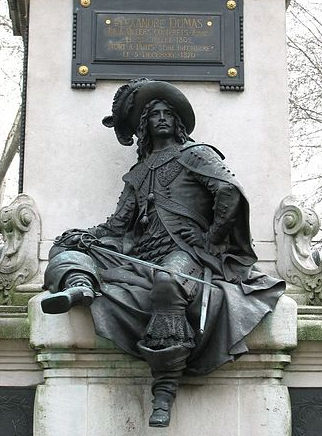 D’Artagnan – the Dumas monument, Paris
D’Artagnan – the Dumas monument, ParisMy favourite book of all time has to be The Three Musketeers by Alexandre Dumas. Nothing else comes close to this amazing story. It is full of everything; friendship, intrigue, betrayal, swashbuckling adventure and a doomed love story. The central character is D’Artagnan; he does not become a Musketeer until the very end, but he is the hero, his courage, skill and intelligence are unsurpassed.
But did you know d’Artagnan was real and so were the Regiment of Musketeers?
The Regiment of Musketeers were formed in France in 1622, as part of King Louis XIII’s personal bodyguard. Originally a compliment of 100 men, the regiment was made up of gentlemen and members of the nobility who were also proven soldiers; a candidate had to have served in the regular army before being considered for enrolment in the Musketeers.
The Musketeers were a mounted regiment, armed with swords and muskets. The 1st and 2nd companies were distinguished by the colour of their horses; grey for the 1st Company of Musketeers and black for the 2nd. Their captain was, in fact, the king; however, their everyday command was left to a captain-lieutenant, with a sub-lieutenant, an ensign and a cornet as junior officers. Their uniform comprised a blue, sleeveless, tunic with a cross of white velvet on the back and front, which was worn over a scarlet coat.
One thing that does hold true in the Dumas novels, is the Musketeers rivalry with the Cardinal’s Guard. Formed by Cardinal Richelieu for his own protection, the Guard and Musketeers kept up an ‘unhealthy’ rivalry, and competition was fierce between France’s 2 elite regiments.
The Musketeer captain-lieutenant was a Captain Troisvilles (Tréville); while other members of the regiment included Armand de Sillègue d’Athos d’Autevielle (Athos), Isaac de Porteau (Porthos) and Henri d’Aramitz (Aramis). Of course, the most famous Musketeer of all is d’Artagnan or, to give him his full name, Charles Ogier de Batz de Castelmore, sieur d’Artagnan. D’Artagnan was born around 1613/15 in the château of Castelmore in Lupiac in Gascony.
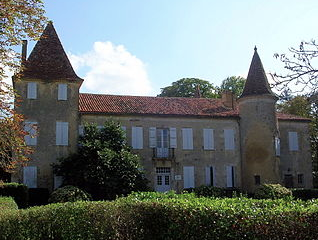 Chateau de Castelmore, Lupiac, Gascony
Chateau de Castelmore, Lupiac, GasconyHis father was Bertrand de Batz, seigneur de la Plaigne, while his mother was Françoise de Montesquiou, daughter of Jean de Montesquiou, seigneur d’Artagnan; and from whom the hero took his nom de guerre. D’Artagnan was one of 7 children with 3 brothers and 3 sisters. Paula and Jean, who became captain of the guards, were older, whilst Arnaud was younger and became an abbot. His 3 sisters, Claude, Henrye and Jeanne, all made good marriages.
No one could join the Musketeers without having proved themselves in the regular regiments. D’Artagnan joined the guards in the mid-1630s and served under Captain des Essarts. The regiment saw much action in the early 1640s, taking part in sieges at Arras, Aire-sur-la-Lys, la Bassée and Bapaume in 1640-41 and Collioure and Perpignan in 1642. Whether or not d’Artagnan was personally involved is unclear, but it is likely he took part in some – if not all – of these sieges.
D’Artagnan managed to find himself a great patron, in the form of Cardinal Mazarin, Richelieu’s protégé and successor as First Minister of France. With the death of Louis XIII, in 1643, Mazarin was also regent for the new king, Louis XIV, who was only 5-years-old at his accession. With Mazarin’s patronage, aged about 30, d’Artagnan joined the Musketeers in 1644. Unfortunately for d’Artagnan, the Musketeers were disbanded only 2 years later, in 1646.
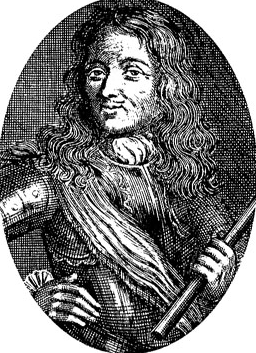 D’Artagnan
D’ArtagnanD’Artagnan, however, continued in the service of Cardinal Mazarin. He was active during the Fronde, the French civil wars that marred Louis XIV’s minority and gave the young king an abiding distaste for Paris. D’Artagnan carried out various missions and acted as a go-between for the Cardinal and his allies, when Mazarin was exiled from France in 1651.
D’Artagnan was ever in the thick of the fighting and narrowly escaped being killed, in 1654, at Stenay, while under the command of Turenne. He fought in sieges at Lancrecies and Saint-Ghislaine and, aged about 40, earned himself promotion, becoming captain of the Guards. When the Musketeers were reinstated, in 1657, d’Artagnan went ‘home’ and the following year he became sub-lieutenant, replacing Isaac de Baas. With Philippe-Julien de Mancini, duc de Nevers and Mazarin’s nephew, in the post of captain-lieutenant, the day-to-day command fell to d’Artagnan.
Although Alexandre Dumas’ hero stayed resolutely single, after the death of Constance, his true love, in reality d’Artagnan married, in 1659, Charlotte-Anne de Chanlecy, baronne de Sainte-Croix. They had 2 sons, born in 1660 and 1661 and both named Louis – after their godfathers, Louis XIV and his son Louis, the Dauphin. The marriage did not last long and the couple officially separated in 1665, possibly due to d’Artagnan’s long absences on duty.
The last few years of his marriage coincided with d’Artagnan’s duty as gaoler to a high-profile political prisoner; Louis XIV’s former Superintendant of Finances, Nicholas Foucquet. D’Artagnan had been ordered to arrest Foucquet in September 1661, on charges of embezzlement and High Treason. The prosecution process was to take 3 years, with Foucquet becoming the ‘fall guy’ for decades of financial mismanagement and corruption; although most believed his real crime was to be more regal than the king himself. D’Artagnan’s duty as gaoler was only finally discharged in January 1665, when Foucquet was delivered to the prison-fortress of Pignerol, in the Italian Alps.
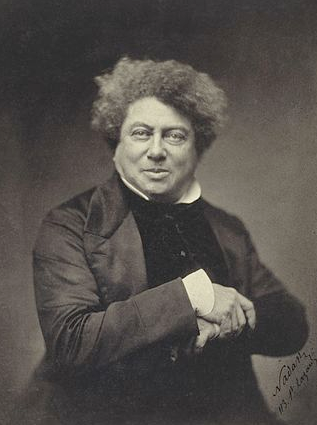 Alexandre Dumas, author of The Three Musketeers
Alexandre Dumas, author of The Three MusketeersAn initial sentence of banishment had been considered too lenient, and so Louis had changed it to one of perpetual imprisonment and solitary confinement, although he was allowed a valet. Foucquet died 15 years later. Some sources suggest that it was Foucquet’s valet, who had served the disgraced minister in prison, who became known as the Man in the Iron Mask, the prisoner in the Bastille, and the inspiration for the character in Dumas’ concluding Musketeer novel, The Vicomte de Bragelonne (Ten Year Later). Another d’Artagnan link to the Iron Mask story is Saint-Mars, d’Artagnan’s friend and second-in-command during the Foucquet affair, and eventual Governor of the Bastille – he was, in fact, still governor there at the time of the Man in the Iron Mask’s death.
With the failure of his marriage, d’Artagnan concentrated on his career as a soldier. In 1671 he was again involved in a high-profile arrest, that of the Duc de Lauzun, who had dared to marry the Duchesse de Montpensier, la Grande Mademoiselle, cousin of Louis XIV. D’Artagnan and his Musketeers again made the journey across the Alps, delivering Lauzun to Pignerol on 16 December; his rooms were those directly below Foucquet, in the Angel Tower.
In 1672 d’Artagnan was appointed Governor of Lille, replacing the Mareschal d’Humières. However, by 1673, he was back in his rightful place, at the head of his regiment of Musketeers in the Dutch Wars. In May, 1673, Louis XIV had marched on Maastricht at the head of his troops, several thousand strong. By 10 June the town was surrounded, not only by French forces, but also their English allies, and the siege began in earnest. The artillery bombardment began on 19th June and lasted for 5 days and was followed by an assault which included 4 battalions, 8 squadrons of the King’s Horse, 300 Grenadiers and the 1st company of the Musketeers, led by d’Artagnan.
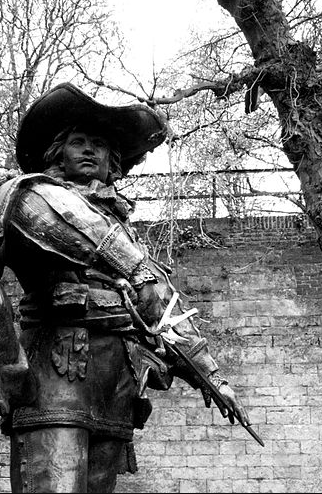 Statue of D’Artagnan, Maastricht
Statue of D’Artagnan, MaastrichtD’Artagnan’s company attacked a demi-lune (half-moon) fortification, which protected the Tongres Gate. Within half an hour of fierce fighting, d’Artagnan’s men had control of the demi-lune, a flag of the fleur-de-lis planted firmly on the parapet. The Duke of Monmouth, one of the English commanders, then decided to cross the open ground that separated the demi-lune from the Tongres Gate. It is likely that d’Artagnan, a more experienced soldier, advised against such foolhardy action, but once Monmouth led the charge, d’Artagnan could do nothing but follow, leading his Musketeers into the foray.
D’Artagnan made it to the ramparts of Maastricht before falling mortally wounded from a musket ball:
It was on this occasion that Monsieur D’Artagnan was killed. The intensity of musket fire was such that even hail could not fall more abundantly. Two musketeers trying to pick up Monsieur D’Artagnan were killed at his side, and two others who had taken their place and given themselves the same duty, were killed in the same way next to their captain, without even having the time to pick themselves up …. This battle went on for five hours in the light of day and out in the open, and one could almost say: “And the combat ceased due to a lack of combatants.”
D’Artagnan died on 25th June, 1673, aged about 60; he was buried in Maastricht. Having lost their brilliant, legendary captain, the Musketeers were grief-stricken. As was Louis XIV, who, that evening, wrote to his wife, Maria Theresa, ‘Madame, I have lost d’Artagnan, in whom I had the utmost confidence and who merited it in all occasions.’
Intelligent, loyal, steadfast and brave, d’Artagnan was as much a hero in real-life as on the page; but thanks to Alexandre Dumas his legend not only lives on, but grows…
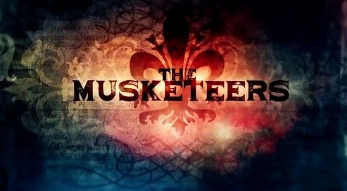
*
Footnotes: ¹The Man Behind the Iron Mask by John Noone; ²The Death of D’Artagnan (article) Dr Josephine Wilkinson, Facebook page; ³Mercure Galant, June 1673, quoted by Dr Josephine Wilkinson
Thanks to Cindy Barris-Speke who informed via Facebook that d’Artagnan is buried in Maastricht.
*
Pictures courtesy of Wikipedia
*
Sources: The Man Behind the Iron Mask by John Noone; The Death of D’Artagnan (article) Dr Josephine Wilkinson, Facebook page; jospha-josephine-wilkinson.blogspot.co.uk; sirclisto.com; Forgotten History, Unbelilevable Moments from the Past by Jem Duducu; awesomestories.com.
By Alexandre Dumas: The Three Musketeers (Les Trois Mousquetaires); Twenty Years After (Vingt Ans Apres); The Vicomte of Bragelonne (Le Vicomte de Bragelonne).
*
First published on History… The Interesting Bits 30/12/2016
Sharon Bennett Connolly
 Sharon Bennett Connolly has been fascinated by history for over 30 years now. She has studied history academically and just for fun – and even worked as a tour guide at historical sites, including Conisbrough Castle.
Sharon Bennett Connolly has been fascinated by history for over 30 years now. She has studied history academically and just for fun – and even worked as a tour guide at historical sites, including Conisbrough Castle.Born in Yorkshire, she studied at University in Northampton before working in Customer Service roles at Disneyland in Paris and Eurostar in London.
She is now having great fun, passing on her love of the past to her son, hunting dragons through Medieval castles or exploring the hidden alcoves of Tudor Manor Houses.
On launching her own blog – History ... the Interesting Bits, Sharon started researching and writing about the lesser-known stories and people from European history, the stories that have always fascinated. Quite by accident, she started focusing on medieval women. And in 2016 she was given the opportunity to write her first non-fiction book, Heroines of the Medieval World, which has recently been published by Amberley. She is now working on her second book, Silk and the Sword: the Women of the Norman Coqnquest, which will be released in late 2018.
Sharon loves to hear from readers, you can find her: Website Facebook Twitter
Heroines of the Medieval World
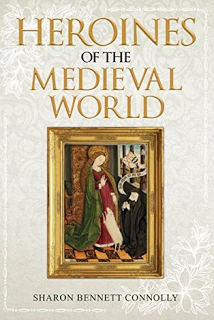 These are the stories of women, famous, infamous and unknown, who shaped the course of medieval history. The lives and actions of medieval women were restricted by the men who ruled the homes, countries and world they lived in. It was men who fought wars, made laws and dictated religious doctrine. It was men who were taught to read, trained to rule and expected to fight. Today, it is easy to think that all women from this era were downtrodden, retiring and obedient housewives, whose sole purpose was to give birth to children (preferably boys) and serve their husbands.Heroines of the Medieval World looks at the lives of the women who broke the mould: those who defied social norms and made their own future, consequently changing lives, society and even the course of history.
These are the stories of women, famous, infamous and unknown, who shaped the course of medieval history. The lives and actions of medieval women were restricted by the men who ruled the homes, countries and world they lived in. It was men who fought wars, made laws and dictated religious doctrine. It was men who were taught to read, trained to rule and expected to fight. Today, it is easy to think that all women from this era were downtrodden, retiring and obedient housewives, whose sole purpose was to give birth to children (preferably boys) and serve their husbands.Heroines of the Medieval World looks at the lives of the women who broke the mould: those who defied social norms and made their own future, consequently changing lives, society and even the course of history.Amazon US Amazon UK
Published on January 26, 2018 03:09
January 24, 2018
Life in the time of Thomas Wentworth, 1st Earl of Strafford, 1593 – 1641 by Nancy Blanton #history #Ireland @nancy_blanton
Life in the time of Thomas Wentworth,
1st Earl of Strafford, 1593 – 1641
by Nancy Blanton
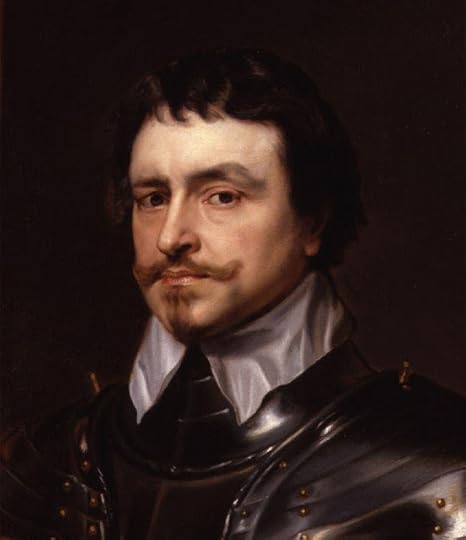
Thomas Wentworth by Anthony van Dyck
Just before the turn of the 17th century in 1593, Thomas Wentworth was born in London, into fortune, property and prestige. Queen Elizabeth I still reigned, and the bloody Nine Years War raged on in Ireland.
By 1614 when his father died, Wentworth inherited the great Wentworth Woodhouse of Yorkshire—by the 18th century the largest of England’s country houses—plus two other estates and vast business holdings to keep things running. In addition to income, such land ownership commanded power and respect. Truly, Wentworth already had everything and more than most people might desire in life.
But, he sought more than anything what he did not have: a royal title. An earldom. It would come at the greatest cost.
His ambition led him to politics. He started law school in 1607, and in 1611 he was knighted. He married an earl’s daughter. As a principal landowner he quickly became Yorkshire’s representative in the English Parliament.
In 1625, Charles I ascended to the throne. The following year Wentworth became High Sheriff of Yorkshire, and in 1628 he returned to Parliament to become one of the most vocal supporters of the Petition of Right, which attempted to curb Charles’s non-Parliamentary taxation, forced billeting of soldiers in people’s homes, imprisonment without cause, and the use of martial law.
 King Charles I by Anthony van Dyck
King Charles I by Anthony van DyckWentworth showed himself to be smart, reasoning and persuasive, with strong leadership abilities. He became President of the Council of the North. He joined Parliament’s dispute with King Charles I over subsidies to support the Thirty Years War effort, and stood against the king even to the point of imprisonment for refusing to pay his "forced loans."
But here is where he made his first dangerous turn. The king invited Wentworth to join the Privy Council: to sit at the king’s table with titled courtiers and advise the king on decisions to run the commonwealth. It fed Wentworth’s deepest ambition. It was an offer he could not refuse. But it branded him as a turncoat to his fellow Parliamentary members. He had been seduced by power.
Wentworth turned from fighting the king’s arbitrary use of power to being a staunch supporter of the Divine Right of Kings. Charles had picked up his father King James I’s torch for this the long-held belief that monarchs were chosen by God, had a direct connection to God’s word, and therefore should always be trusted to do God’s will and make decisions for the highest good, guided by God’s hand.
At this time in history, however, people had seen many rulers supposed to be God’s designees on Earth who made very poor decisions. They had recognized greater access to their own religion through Calvinism and could read the Bible themselves. The printing press, nearly 200 years old, was demonstrating the considerable powers of mass communication. And the Divine Right was under fire.
By 1629, Charles grew tired of arguing with Parliament for what he wanted, and having to ask for his subsidies. He decided he no longer needed Parliament at all. He adopted “self rule,” which became known later as the Eleven Years’ Tyranny.
In 1632, the king appointed Thomas Wentworth to be the new Lord Deputy of Ireland. Although distant from the king’s court, it was a very powerful position in a time of sweeping change.
Ireland had been settled by the Anglo-Normans since the time of King Henry II in the 12th century, and from that time great and powerful clans had developed and intermarried with the Irish, such that they became accepted “Irish” clans. Until the time of Henry VIII, they ruled their realms autonomously.
The Desmond Rebellions of the 16th century began when Henry named himself king of Ireland, and tried to exert his authority over all the clans, starting first with plantations in fertile Munster. They ended with Irish defeat just before Elizabeth I died in 1603. Several clan leaders remained loyal to the king, yet Ireland remained resistant and challenging to oppressive English rule. To English adventurers, Ireland seemed like a plum that waited to be picked.
If Wentworth’s appointment to Ireland had been orchestrated by other courtiers eager to get him out of the running for the lucrative job as the king’s treasurer, no matter. Wentworth saw great opportunity, and planned to be the most effective viceroy the king had ever seen.
At this point his first and second wives had died. Wentworth had secretly married the 18-year-old daughter of a Yorkshire neighbor, and sent her ahead to Ireland to start preparing their home. Meanwhile he studied and learned, preparing for a long-term and “thorough” effort to make Ireland a profitable venture for the king. He did not set foot on Irish soil himself until July of 1633, with a huge retinue including 30 coaches of six.
And the first task on his list, after losing to pirates the £500 worth of wardrobe that he had shipped ahead, was to get control of the Irish Sea and secure Ireland for trade.
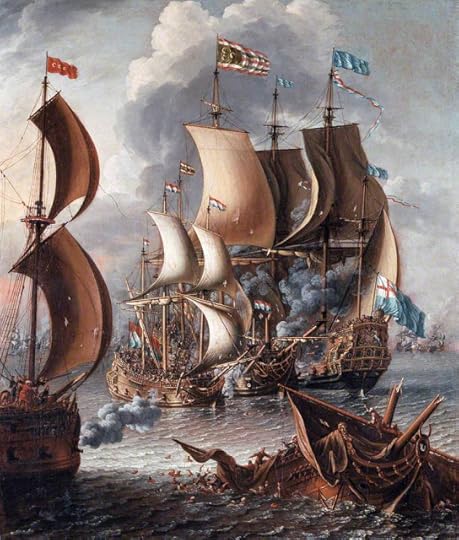 Laureys a Castro - A Sea Fight with Barbary Corsairs. More than half of the king’s subjects made their livings from the sea, whether collecting fish, oysters, pearls, eels, gulls—anything they could eat or sell—or operating small craft and large merchant ships for moving passengers and goods. At the same time, Algerian pirates were notorious for robbing ships of their cargo, and robbing or abducting passengers and crew for ransom or to sell as slaves. Wentworth quickly took control by installing trusted captains to patrol the Irish Sea, and by rooting out corrupt officials who took bribes from the pirates and pocketed money intended for their crew’s provisions.
Laureys a Castro - A Sea Fight with Barbary Corsairs. More than half of the king’s subjects made their livings from the sea, whether collecting fish, oysters, pearls, eels, gulls—anything they could eat or sell—or operating small craft and large merchant ships for moving passengers and goods. At the same time, Algerian pirates were notorious for robbing ships of their cargo, and robbing or abducting passengers and crew for ransom or to sell as slaves. Wentworth quickly took control by installing trusted captains to patrol the Irish Sea, and by rooting out corrupt officials who took bribes from the pirates and pocketed money intended for their crew’s provisions. Once installed in Dublin Castle, Wentworth began a mission of “thorough,” intending not only to establish law and order for common people, but to root out corruption among the nobles, such as the Great Earl of Cork who’d been enjoying a healthy portion of the tithes from the church at Youghal. He would support the growth of Protestant religion while limiting the political power of Catholics. He would invest in new industries like the wine trade, linen and tobacco. And he would continue in the king’s interest the spread of English plantations.
Wentworth saw plantation as a benefit to Ireland, believing native Irish did not understand how to wring the greatest productivity from their lands, and more industrious English (Protestant) settlers would demonstrate the most efficient and lucrative practices. But it was met with great resistance, and the underlying goal was far from altruistic.
Wentworth devised a plan by which, instead of the crown just taking lands, the existing landowners would happily surrender their lands to the king in order to have them returned with clear and legal titles—minus, of course, the 25 percent of the best lands that Charles would keep for himself. The goal was to shift, over time, the majority of land ownership from Catholic to Protestant. The result of this process was considerable unrest, as the nobles lost income and Irish families were turned out of traditional homelands.
Over several ensuing years, Wentworth methodically and relentlessly carried out his plans, implementing the king’s divine right, arrogantly establishing absolute rule, and enriching himself along the way. His tactics and lack of political finesse made him many powerful enemies in all corners of his life. By the time of the Bishops Wars(1639-40) against Scotland—the king’s attempt to enforce his own religious practices upon the Puritan Scots—Wentworth became the king’s primary advisor and received his coveted earldom. He was named Earl of Strafford in 1640.
And then, when the wars were lost, he became the king’s scapegoat.
Parliament was called because money was needed to pay the Scots army under terms of the treaty. Parliament then impeached Wentworth—fueled by his enemies in Ireland. And when, angered over the country’s bankruptcy, the members were unable to prove treason against him, they dusted off an ancient, unused but still available tool, the Bill of Attainder, which required no need of proof to execute a man accused of high treason. King Charles, in his classic, two-faced, self-serving behavior, signed the death warrant for his most loyal servant.
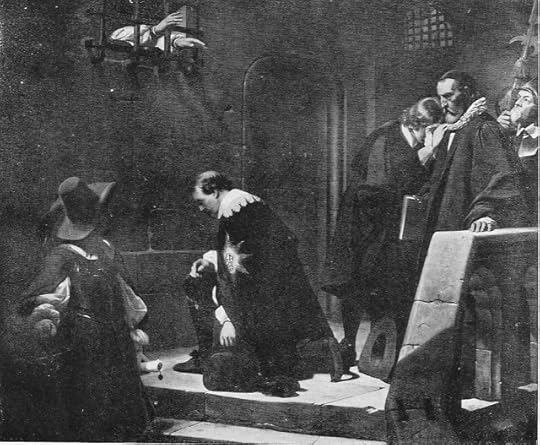 Wentworth receives final blessing from the imprisoned Archbishop Laud, by Paul Delaroche, 1836
Wentworth receives final blessing from the imprisoned Archbishop Laud, by Paul Delaroche, 1836 Wentworth, having achieved his goal and reached his zenith of wealth and power, was beheaded by Parliament in May of 1641.
Nancy Blanton
 Nancy Blantonis the author of award-winning novels based primarily in Irish history. The Prince of Glencurragh (July 2016), her second novel, is set in 1634 prior to the great rebellion of 1641.The book has won Florida's Royal Palm Literary Award for historical fiction and was named first runner up for Book of the Year. It has also medaled in the Feathered Quill Book Awards and is a top finalist in Amelia Island Book Festival's Book Island Literary Awards and M.M. Bennetts Prize for Historical Fiction.
Nancy Blantonis the author of award-winning novels based primarily in Irish history. The Prince of Glencurragh (July 2016), her second novel, is set in 1634 prior to the great rebellion of 1641.The book has won Florida's Royal Palm Literary Award for historical fiction and was named first runner up for Book of the Year. It has also medaled in the Feathered Quill Book Awards and is a top finalist in Amelia Island Book Festival's Book Island Literary Awards and M.M. Bennetts Prize for Historical Fiction.Her first novel, Sharavogue, also set in 17th century Ireland, is the 2014 winner of Florida’s Royal Palm Literary Award. Her third book, The Earl in Black Armor, set in the time of Thomas Wentworth, is scheduled for publication in late 2018. Visit her at nancyblanton.com
The Prince of Glencurragh
 As the son of a great Irish warrior, Faolán Burke should have inherited vast lands and a beautiful castle, Glencurragh. But tensions grow in 1634 Ireland, as English plantation systems consume traditional clan properties, Irish families are made homeless, and Irish sons lose their inheritance. Encountering the beautiful heiress, Vivienne FitzGerald, Faolán believes if they were to marry, together they could restore his stolen heritage and build a prosperous life. But, because the Earl of Cork protects her, abduction seems to be his only option.
As the son of a great Irish warrior, Faolán Burke should have inherited vast lands and a beautiful castle, Glencurragh. But tensions grow in 1634 Ireland, as English plantation systems consume traditional clan properties, Irish families are made homeless, and Irish sons lose their inheritance. Encountering the beautiful heiress, Vivienne FitzGerald, Faolán believes if they were to marry, together they could restore his stolen heritage and build a prosperous life. But, because the Earl of Cork protects her, abduction seems to be his only option.Best friend Aengus O’Daly narrates as he and the brothers Thomas and Sean Barry help Faolán to complete the deed, and hasten to the Earl of Barrymore, who has promised to negotiate the marriage settlement. But Vivienne clearly has a mind of her own, and the adventure that began as a lark takes a dark turn when one man is injured, another is killed, and their plans for Barrymore’s support go awry.
Faolán now finds himself in the crossfire between the four most powerful men in Ireland—the earls of Clanricarde, Cork, Ormonde, and the aggressive new Lord Deputy of Ireland, Thomas Wentworth—men who use people like game pieces to be moved about for their own benefit. And other forces threaten their plans, and even their lives. With the course of events now beyond their control, will Faolán and Vivienne ever realize the dream of Glencurragh?
Amazon US Amazon UK
Published on January 24, 2018 23:00
January 23, 2018
Author’s Inspiration ~ John Anthony Miller #HistFic #WW2 @authorjamiller
It is with the greatest of pleasure that I welcome historical fiction author, John Anthony Miller, on to the blog today. John is going to share with us his inspirations behind his latest book…
When Darkness Comes
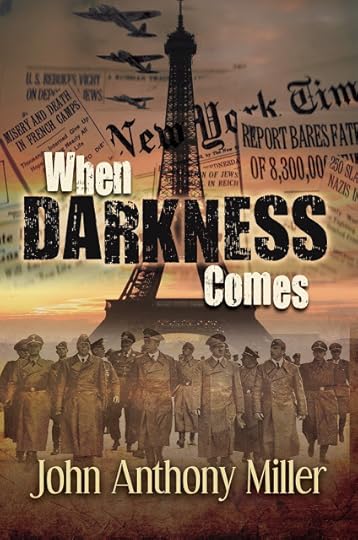
Paris, 1942
Three lives intertwined in Nazi-occupied Paris: Paul, a brooding banker whose family was killed by the Gestapo, Rachel, a teenage Jew who leads her family's escape from the Germans, Claire, a demure bookstore owner who finds courage and conviction - all confronted by an infamous Nazi collaborator. In the sprawling network of catacombs underneath the Left Bank of Paris, they hide thousands of Jewish refugees, giving them new identities and leading them to safety. Together they move forward, outsmarting a ruthless enemy, overcoming obstacles, defying danger, moving farther and faster, almost invincible – until an innocent bystander notices something amiss and their entire world collapses around them.
<!-- /* Font Definitions */ @font-face {font-family:"Cambria Math"; panose-1:2 4 5 3 5 4 6 3 2 4; mso-font-charset:0; mso-generic-font-family:auto; mso-font-pitch:variable; mso-font-signature:-536870145 1107305727 0 0 415 0;} @font-face {font-family:Calibri; panose-1:2 15 5 2 2 2 4 3 2 4; mso-font-charset:0; mso-generic-font-family:auto; mso-font-pitch:variable; mso-font-signature:-520092929 1073786111 9 0 415 0;} /* Style Definitions */ p.MsoNormal, li.MsoNormal, div.MsoNormal {mso-style-unhide:no; mso-style-qformat:yes; mso-style-parent:""; margin-top:0cm; margin-right:0cm; margin-bottom:8.0pt; margin-left:0cm; line-height:107%; mso-pagination:widow-orphan; font-size:11.0pt; font-family:Calibri; mso-ascii-font-family:Calibri; mso-ascii-theme-font:minor-latin; mso-fareast-font-family:Calibri; mso-fareast-theme-font:minor-latin; mso-hansi-font-family:Calibri; mso-hansi-theme-font:minor-latin; mso-bidi-font-family:"Times New Roman"; mso-bidi-theme-font:minor-bidi; mso-ansi-language:EN-US;} p {mso-style-noshow:yes; mso-style-priority:99; mso-margin-top-alt:auto; margin-right:0cm; mso-margin-bottom-alt:auto; margin-left:0cm; mso-pagination:widow-orphan; font-size:12.0pt; font-family:"Times New Roman"; mso-fareast-font-family:"Times New Roman"; mso-ansi-language:EN-US;} .MsoChpDefault {mso-style-type:export-only; mso-default-props:yes; font-size:11.0pt; mso-ansi-font-size:11.0pt; mso-bidi-font-size:11.0pt; font-family:Calibri; mso-ascii-font-family:Calibri; mso-ascii-theme-font:minor-latin; mso-fareast-font-family:Calibri; mso-fareast-theme-font:minor-latin; mso-hansi-font-family:Calibri; mso-hansi-theme-font:minor-latin; mso-bidi-font-family:"Times New Roman"; mso-bidi-theme-font:minor-bidi; mso-ansi-language:EN-US;} .MsoPapDefault {mso-style-type:export-only; margin-bottom:8.0pt; line-height:107%;} @page WordSection1 {size:612.0pt 792.0pt; margin:72.0pt 90.0pt 72.0pt 90.0pt; mso-header-margin:36.0pt; mso-footer-margin:36.0pt; mso-paper-source:0;} div.WordSection1 {page:WordSection1;} </style></div><div align="center" style="text-align: center;"><span lang="EN-US" style="color: blue; font-size: 32pt;">Author’s Inspiration<b><o:p></o:p></b></span></div><div align="center" style="text-align: center;"><span lang="EN-US" style="font-size: 32.0pt;"><br /></span></div><div class="MsoNormal" style="line-height: normal; margin-bottom: .0001pt; margin-bottom: 0cm;"><span lang="EN-US" style="font-family: "times new roman"; font-size: 14.0pt;">I like to write about ordinary people who are compelled to do extraordinary things, driven by events or tumultuous times. My first four books are about WWII, but not generals or admirals or politicians, but a reporter, a history teacher, a banker, a violinist. They become heroes, just as many other ordinary people became heroes during the global conflict. <o:p></o:p></span></div><div class="MsoNormal" style="line-height: normal; margin-bottom: .0001pt; margin-bottom: 0cm;"><br /></div><div class="MsoNormal" style="line-height: normal; margin-bottom: .0001pt; margin-bottom: 0cm;"><span lang="EN-US" style="font-family: "times new roman"; font-size: 14.0pt;">One of my favorite websites to research personal accounts is the BBC, who have assembled a database for both the First and Second World War. There are many heroes referenced in their collection who were actually ordinary people, just like you and me. Some of their stories are riveting, difficult to imagine in a world that is now so different, but in some ways, still the same.<o:p></o:p></span></div><div class="MsoNormal" style="line-height: normal; margin-bottom: .0001pt; margin-bottom: 0cm;"><br /></div><div class="MsoNormal" style="line-height: normal; margin-bottom: .0001pt; margin-bottom: 0cm;"><span lang="EN-US" style="font-family: "times new roman"; font-size: 14.0pt;">I like using the Second World War as a backdrop because it’s a conflict where good and evil are easily defined. My readers can envision the tragedies, easily choosing sides, knowing that the war was waged to preserve the freedom of mankind. That in itself, tends to be a powerful message<o:p></o:p></span></div><div class="MsoNormal" style="line-height: normal; margin-bottom: .0001pt; margin-bottom: 0cm;"><br /></div><div class="MsoNormal" style="line-height: normal; margin-bottom: .0001pt; margin-bottom: 0cm;"><span lang="EN-US" style="font-family: "times new roman"; font-size: 14.0pt;">I also like to use the location of the novel as a character, often exotic, richly described, a place where people have either been or might someday like to go. My first three books were set in Singapore, Berlin, and Lisbon. For my novel <i style="mso-bidi-font-style: normal;">When Darkness Comes</i>, I chose Paris, one of the most beautiful cities in the world, and a personal favorite of mine.<o:p></o:p></span></div><div class="MsoNormal" style="line-height: normal; margin-bottom: .0001pt; margin-bottom: 0cm;"><br /></div><div class="MsoNormal" style="line-height: normal; margin-bottom: .0001pt; margin-bottom: 0cm;"><span lang="EN-US" style="font-family: "times new roman"; font-size: 14.0pt;">The ordinary people featured in <i style="mso-bidi-font-style: normal;">When Darkness Comes</i> lose loved ones or personal freedoms and converge to fight the Nazis. They use the only tools they have, given their limited military skills, and decide to rescue Jews from the Germans. I think that the Holocaust, and all the evils it contains, is a story that deserves to be continually told, lest we forget its victims and survivors, or how horrific it actually was, so that it never, in any shape or form, can or will be repeated.<o:p></o:p></span></div><div class="MsoNormal" style="line-height: normal; margin-bottom: .0001pt; margin-bottom: 0cm;"><br /></div><div class="MsoNormal" style="line-height: normal; margin-bottom: .0001pt; margin-bottom: 0cm;"><span lang="EN-US" style="font-family: "times new roman"; font-size: 14.0pt;">When I first started <i style="mso-bidi-font-style: normal;">When Darkness Comes</i>, I wanted to write about a man who gave up everything to save others – his wealth, his reputation, his family, his future – for no reward or recognition. I wanted to develop a character whose life becomes self-sacrifice, simply to serve mankind, a concept that is pure and holistic, but sometimes difficult to imagine. I created a character named Julian Junot, who poses as a Nazi collaborator, while risking fame and fortune to create a network that rescues the Jews. But often when a novel is written, the other characters the author invents refuse to accept the secondary role intended. And such was the case with <i style="mso-bidi-font-style: normal;">When Darkness Comes</i>.<o:p></o:p></span></div><div class="MsoNormal" style="line-height: normal; margin-bottom: .0001pt; margin-bottom: 0cm;"><br /></div><div class="MsoNormal" style="line-height: normal; margin-bottom: .0001pt; margin-bottom: 0cm;"><span lang="EN-US" style="font-family: "times new roman"; font-size: 14.0pt;">While researching the book I created Paul, Claire, and Rachel, those that operate the network required to rescue the Jews, from fragments of sentences I found in historical records. Each described tragedies endured by those in the French Resistance – a man who lost his wife and daughter, a young woman killed by the Germans, a teenage Jew who defied the Nazis. I thought they deserved more than a few words in a forgotten WWII journal and felt compelled to tell their stories, even if fueled by my imagination.<o:p></o:p></span></div><div class="MsoNormal" style="line-height: normal; margin-bottom: .0001pt; margin-bottom: 0cm;"><br /></div><div class="MsoNormal" style="line-height: normal; margin-bottom: .0001pt; margin-bottom: 0cm;"><span lang="EN-US" style="font-family: "times new roman"; font-size: 14.0pt;">I also read about a French homeowner forced to board a German officer, a very polite man who replaced a wine glass broken accidentally. From this brief paragraph, General Berg emerged – an enemy who doesn’t quite fit the profile. A devout churchgoer who doted on his granddaughters, he loses his life not because of who he was, but because of what he represented. Just like so many millions of others in the Second World War.<o:p></o:p></span></div><div class="MsoNormal" style="line-height: normal; margin-bottom: .0001pt; margin-bottom: 0cm;"><br /></div><div class="MsoNormal" style="line-height: normal; margin-bottom: .0001pt; margin-bottom: 0cm;"><span lang="EN-US" style="font-family: "times new roman"; font-size: 14.0pt;">Lastly, the book contains horrific tragedies.<span style="mso-spacerun: yes;"> </span>Although not based on anything specific, each can be traced to thousands of similar events that actually occurred, spawned by a global catastrophe that should never be forgotten.<span style="mso-spacerun: yes;"> </span><o:p></o:p></span></div><div class="MsoNormal" style="line-height: normal; margin-bottom: .0001pt; margin-bottom: 0cm;"><br /></div><div class="MsoNormal" style="line-height: normal; margin-bottom: .0001pt; margin-bottom: 0cm;"><span lang="EN-US" style="font-family: "times new roman"; font-size: 14.0pt;">I hope your followers enjoy reading <i style="mso-bidi-font-style: normal;">When Darkness Comes</i> as much as I enjoyed writing it.<o:p></o:p></span></div><div class="MsoNormal" style="line-height: normal; margin-bottom: .0001pt; margin-bottom: 0cm;"><br /></div><div class="MsoNormal" style="line-height: normal; margin-bottom: .0001pt; margin-bottom: 0cm;"><span lang="EN-US" style="font-family: "times new roman"; font-size: 14.0pt;">All the best,<o:p></o:p></span></div><div class="MsoNormal" style="line-height: normal; margin-bottom: .0001pt; margin-bottom: 0cm;"><span lang="EN-US" style="font-family: "times new roman"; font-size: 14.0pt;">John Anthony Miller<o:p></o:p></span></div><div class="MsoNormal" style="line-height: normal; margin-bottom: .0001pt; margin-bottom: 0cm;"><span lang="EN-US" style="font-family: "times new roman"; font-size: 14.0pt;"><br /></span></div><div align="center" style="text-align: center;"><span lang="EN-US" style="font-size: 32.0pt;"><br /></span></div><div align="center" style="text-align: center;"><span lang="EN-US" style="font-size: 32.0pt;"><span style="color: blue;">Links for Purchase</span><o:p></o:p></span></div><div align="center" style="text-align: center;"><span lang="EN-US" style="font-size: 32.0pt;"><br /></span></div><div align="center" class="MsoNormal" style="line-height: normal; margin-bottom: .0001pt; margin-bottom: 0cm; text-align: center;"><span lang="EN-US" style="font-family: "times new roman"; font-size: 32.0pt;"><a href="https://www.amazon.com/When-Darkness-... US</a><o:p></o:p></span></div><div align="center" class="MsoNormal" style="line-height: normal; margin-bottom: .0001pt; margin-bottom: 0cm; text-align: center;"><span lang="EN-US" style="font-family: "times new roman"; font-size: 32.0pt;"><a href="https://www.amazon.co.uk/When-Darknes... UK</a><o:p></o:p></span></div><div align="center" class="MsoNormal" style="line-height: normal; margin-bottom: .0001pt; margin-bottom: 0cm; text-align: center;"><span lang="EN-US" style="font-family: "times new roman"; font-size: 32.0pt;"><a href="https://www.amazon.ca/When-Darkness-C... CA</a><o:p></o:p></span></div><div align="center" class="MsoNormal" style="line-height: normal; margin-bottom: .0001pt; margin-bottom: 0cm; text-align: center;"><br /></div><div align="center" class="MsoNormal" style="line-height: normal; margin-bottom: .0001pt; margin-bottom: 0cm; text-align: center;"><span lang="EN-US" style="font-size: 32.0pt;"><o:p><br /></o:p></span></div><div align="center" class="MsoNormal" style="line-height: normal; margin-bottom: .0001pt; margin-bottom: 0cm; text-align: center;"><span lang="EN-US" style="font-family: "times new roman"; font-size: 32.0pt;"><span style="color: blue;">About the author</span><o:p></o:p></span></div><div align="center" class="MsoNormal" style="line-height: normal; margin-bottom: .0001pt; margin-bottom: 0cm; text-align: center;"><span lang="EN-US" style="font-family: "times new roman"; font-size: 32.0pt;"><br /></span></div><div align="center" class="MsoNormal" style="line-height: normal; margin-bottom: .0001pt; margin-bottom: 0cm; text-align: center;"><a href="http://4.bp.blogspot.com/-1fund3IeGdQ..." imageanchor="1" style="clear: left; float: left; margin-bottom: 1em; margin-right: 1em;"><img border="0" height="200" src="https://4.bp.blogspot.com/-1fund3IeGd..." width="133" /></a></div><div class="MsoNormal" style="line-height: normal; margin-bottom: .0001pt; margin-bottom: 0cm;"><span lang="EN-US" style="color: #181818; font-family: "times new roman"; font-size: 14.0pt;">John Anthony Miller was born in Philadelphia, Pennsylvania to a father of English ancestry and a second-generation Italian mother. Motivated by a life-long love of travel and history, he normally sets his novels in exotic locations during eras of global conflict. Characters must cope and combat, overcoming their own weaknesses as well as the external influences spawned by tumultuous times. He’s the author of the historical thrillers, To Parts Unknown, In Satan’s Shadow, When Darkness Comes, and All the King's Soldiers. He lives in southern New Jersey with his family.<o:p></o:p></span></div><div class="MsoNormal" style="line-height: normal; margin-bottom: .0001pt; margin-bottom: 0cm;"><u style="text-underline: thick;"><span lang="EN-US" style="color: #181818; font-family: "times new roman"; font-size: 14.0pt;">Useful Links<o:p></o:p></span></u></div><div class="MsoNormal" style="line-height: normal; margin-bottom: .0001pt; margin-bottom: 0cm;"><span lang="EN-US" style="color: #181818; font-family: "times new roman"; font-size: 14.0pt;"><a href="http://johnanthonymiller.net/"&g... </span><a href="https://www.facebook.com/authorjohnan..." style="font-family: "Times New Roman"; font-size: 14pt;">Facebook</a> <a href="https://twitter.com/authorjamiller" style="font-family: "Times New Roman"; font-size: 14pt;">Twitter</a></div><br />
Published on January 23, 2018 23:00
The Coffee Pot Book Club
The Coffee Pot Book Club (formally Myths, Legends, Books, and Coffee Pots) was founded in 2015. Our goal was to create a platform that would help Historical Fiction, Historical Romance and Historical
The Coffee Pot Book Club (formally Myths, Legends, Books, and Coffee Pots) was founded in 2015. Our goal was to create a platform that would help Historical Fiction, Historical Romance and Historical Fantasy authors promote their books and find that sometimes elusive audience. The Coffee Pot Book Club soon became the place for readers to meet new authors (both traditionally published and independently) and discover their fabulous books.
...more
...more
- Mary Anne Yarde's profile
- 159 followers



